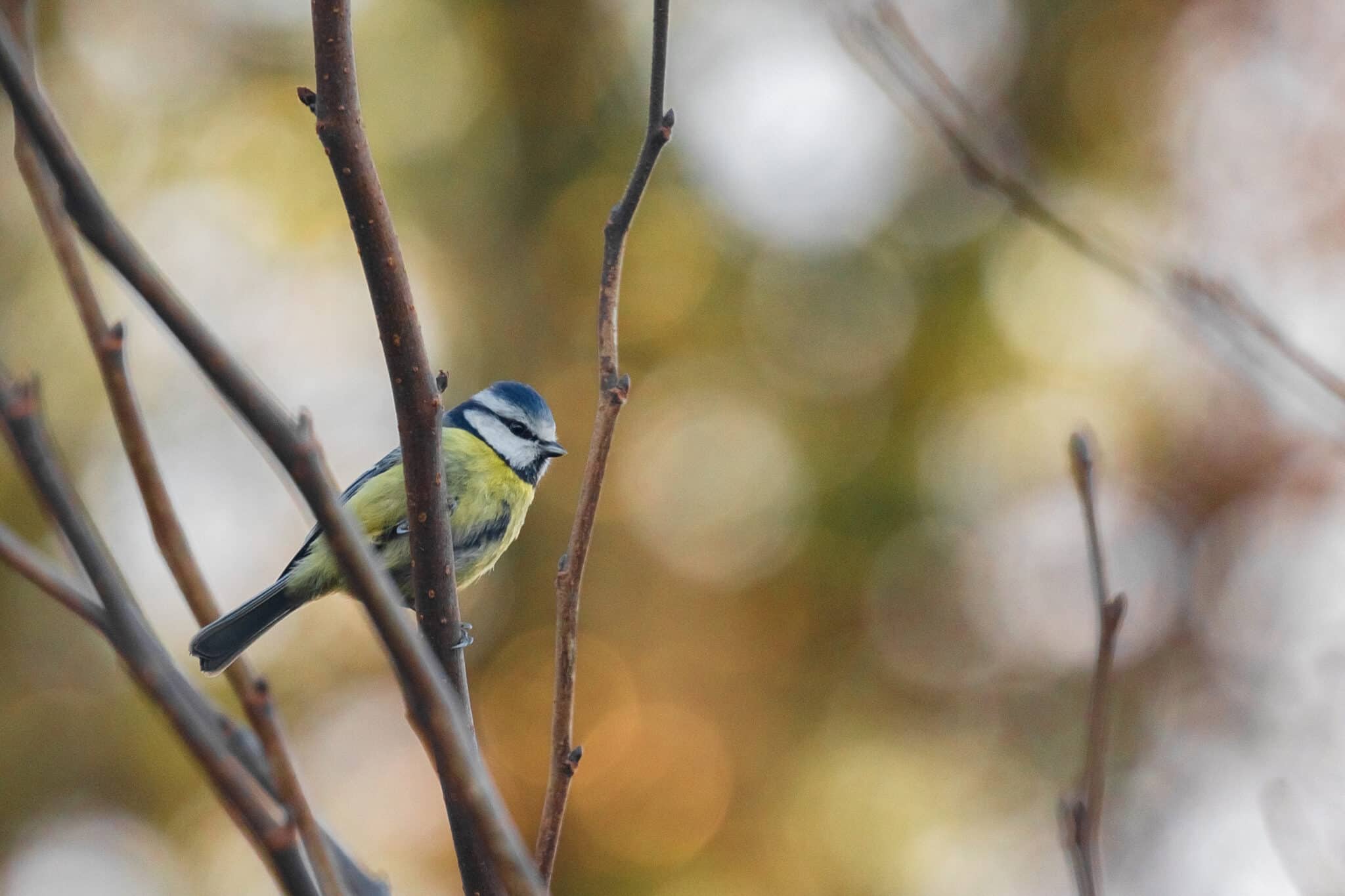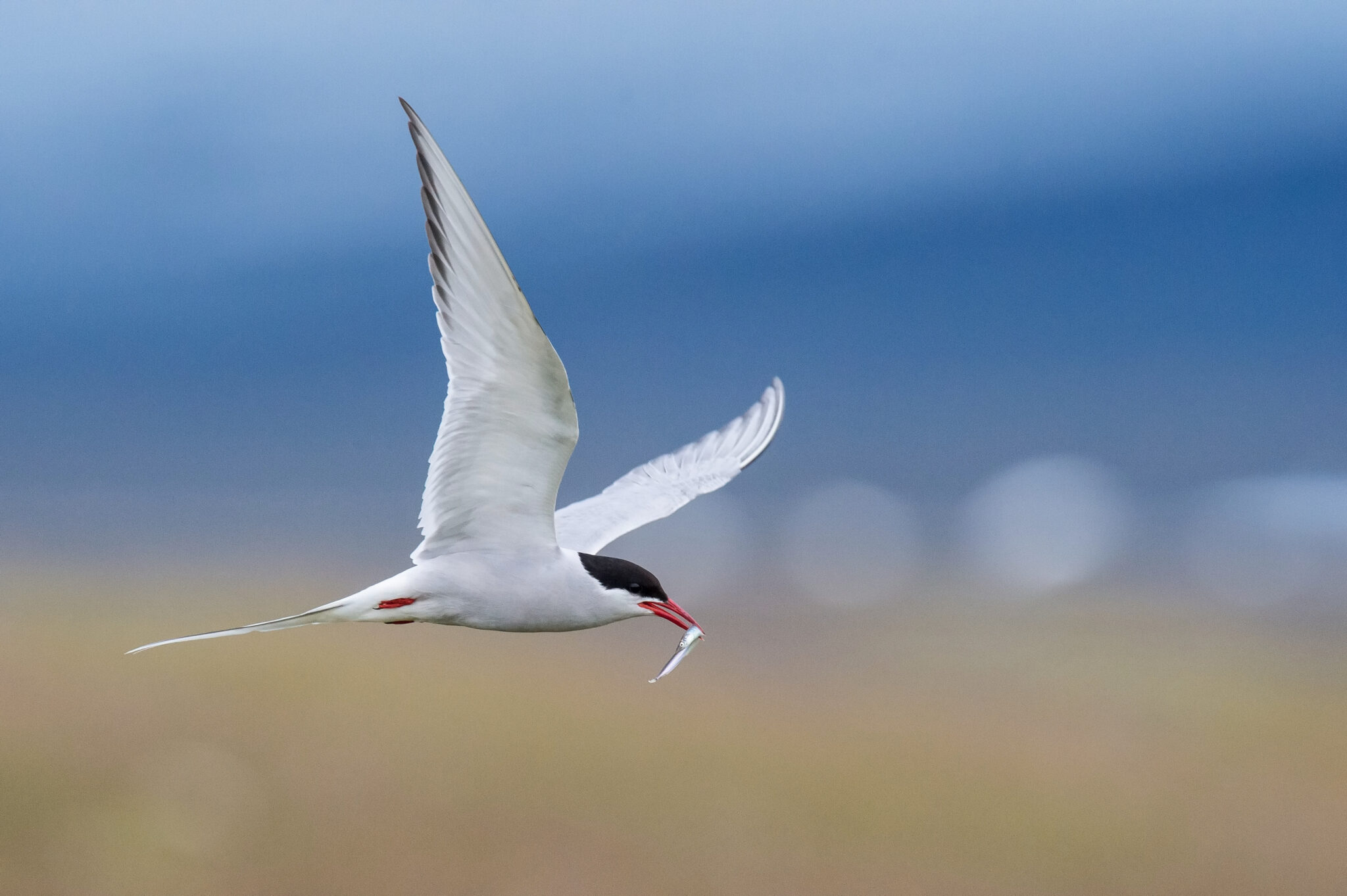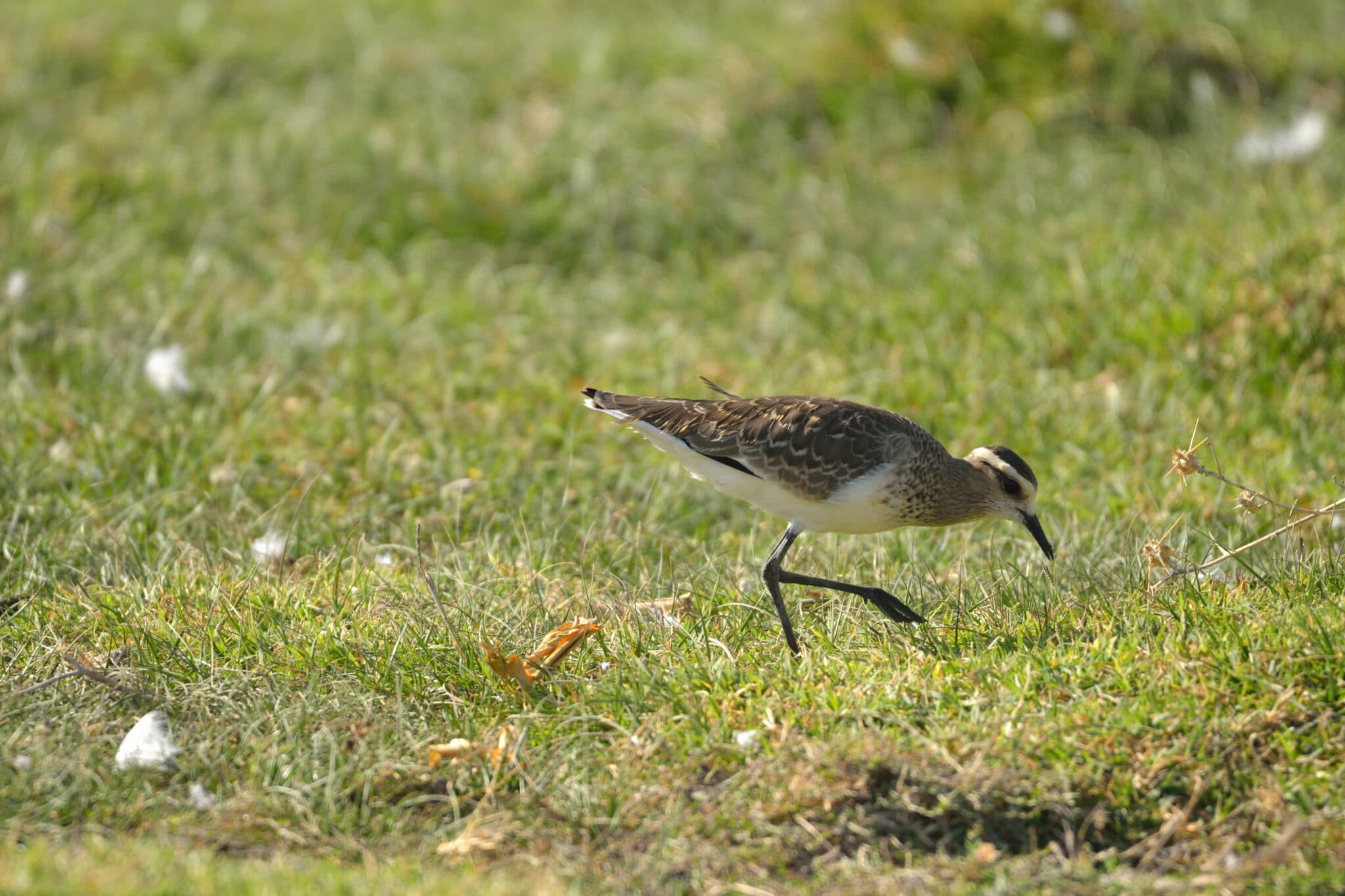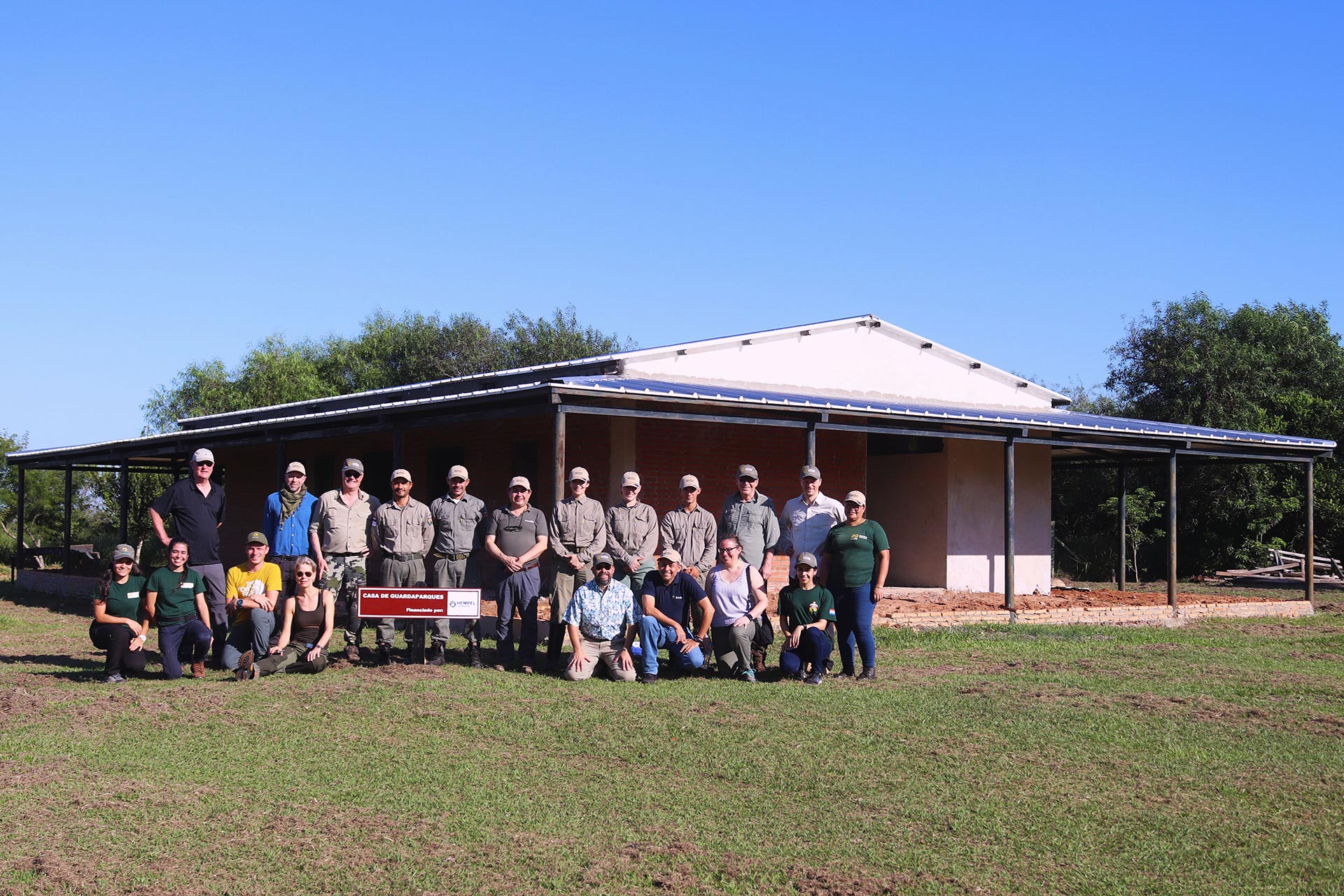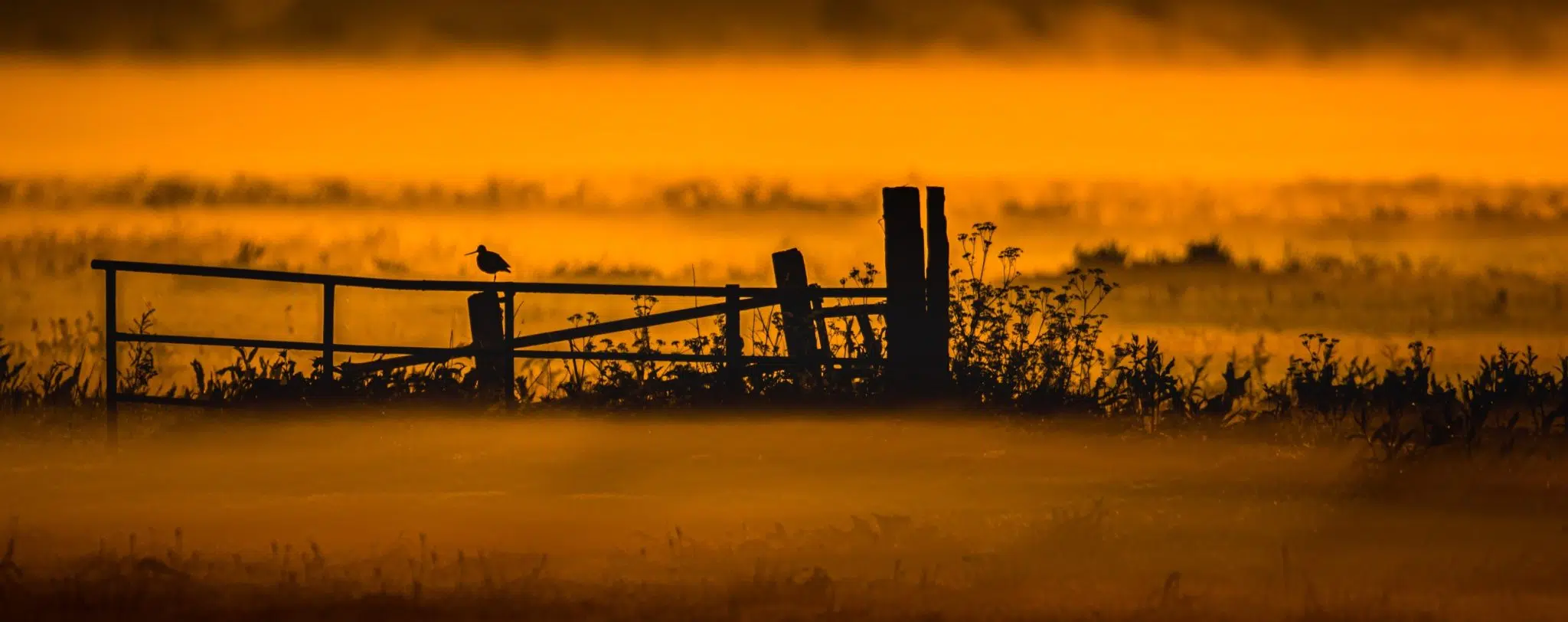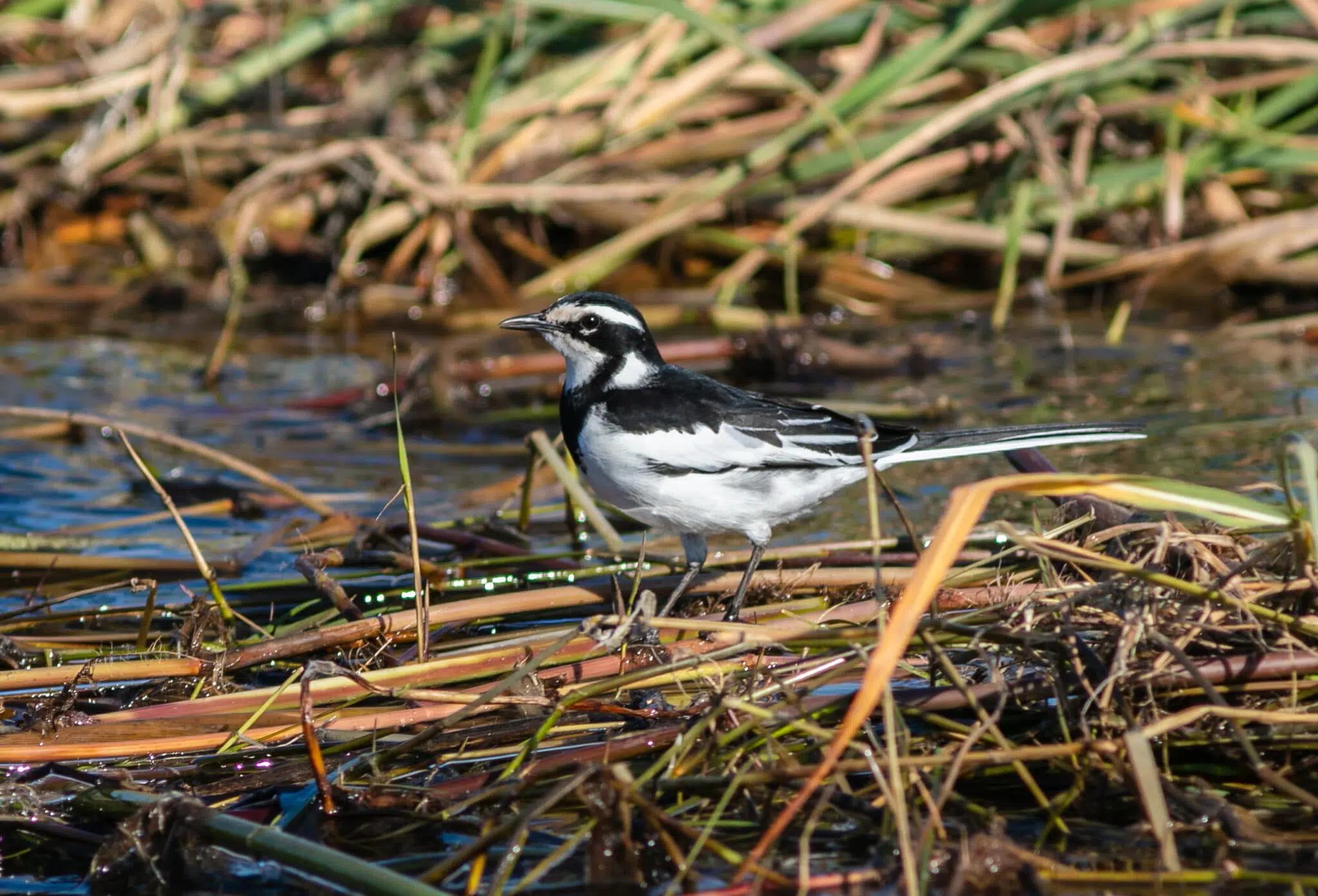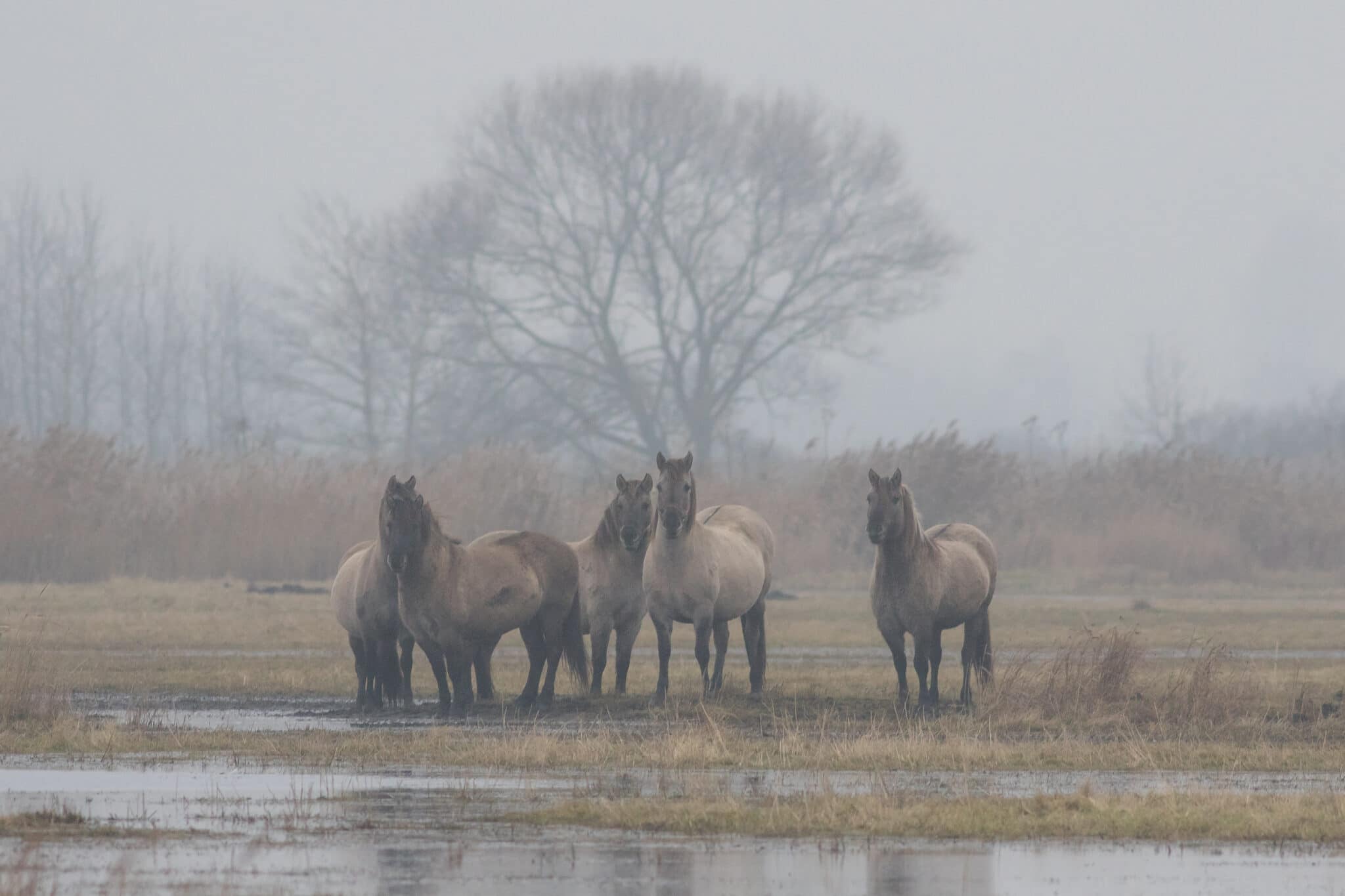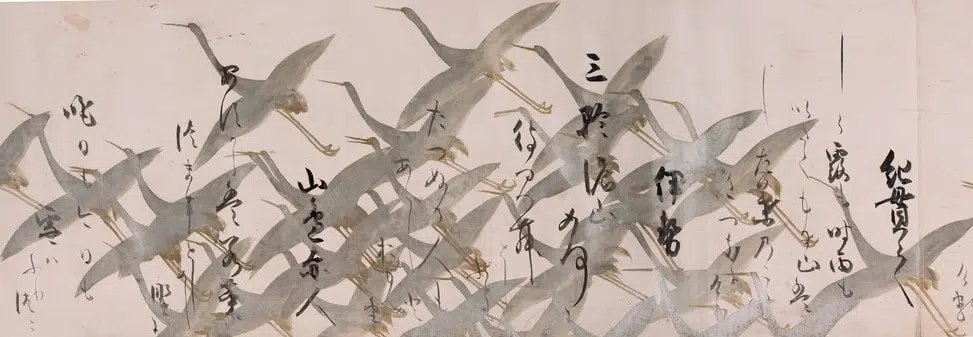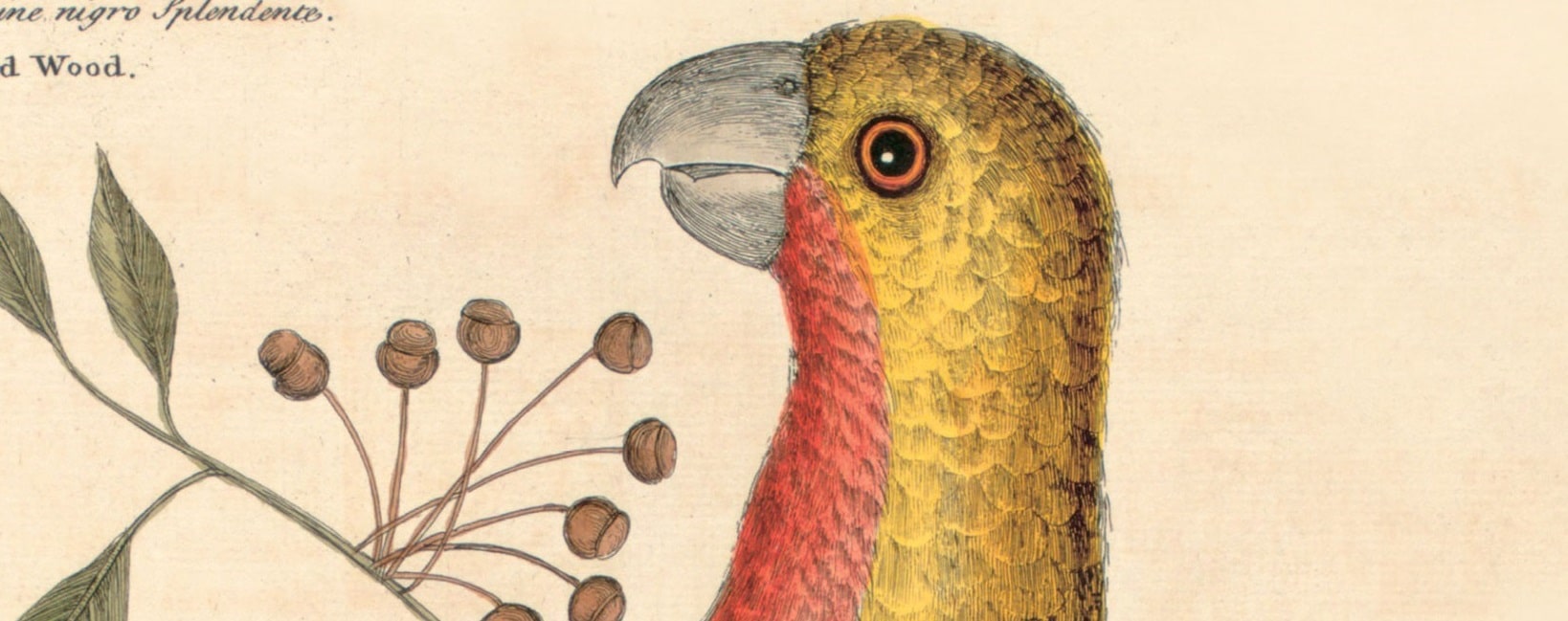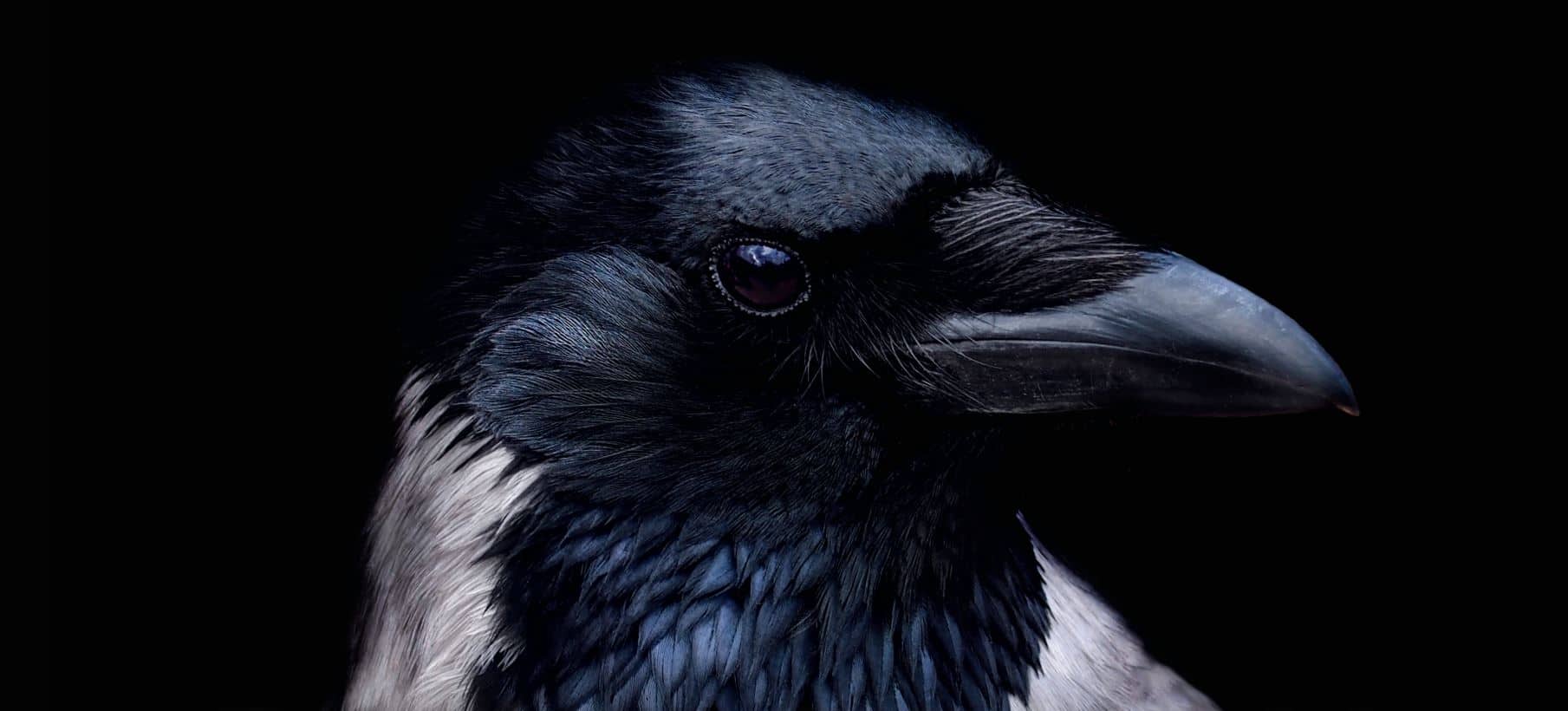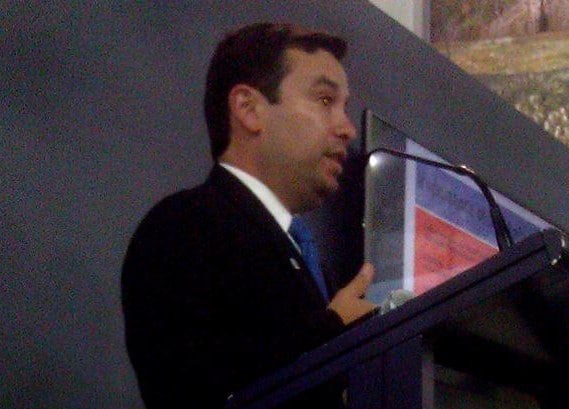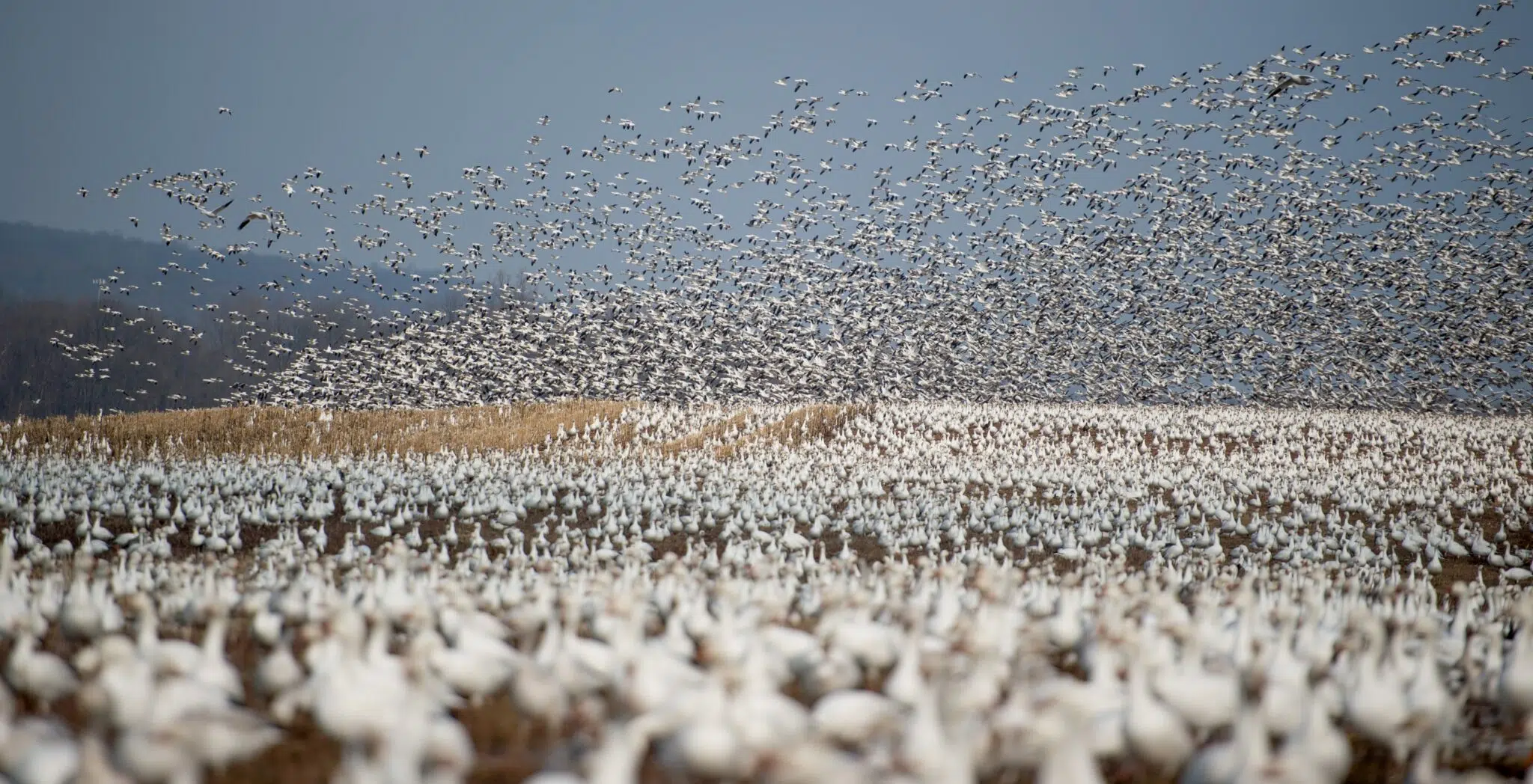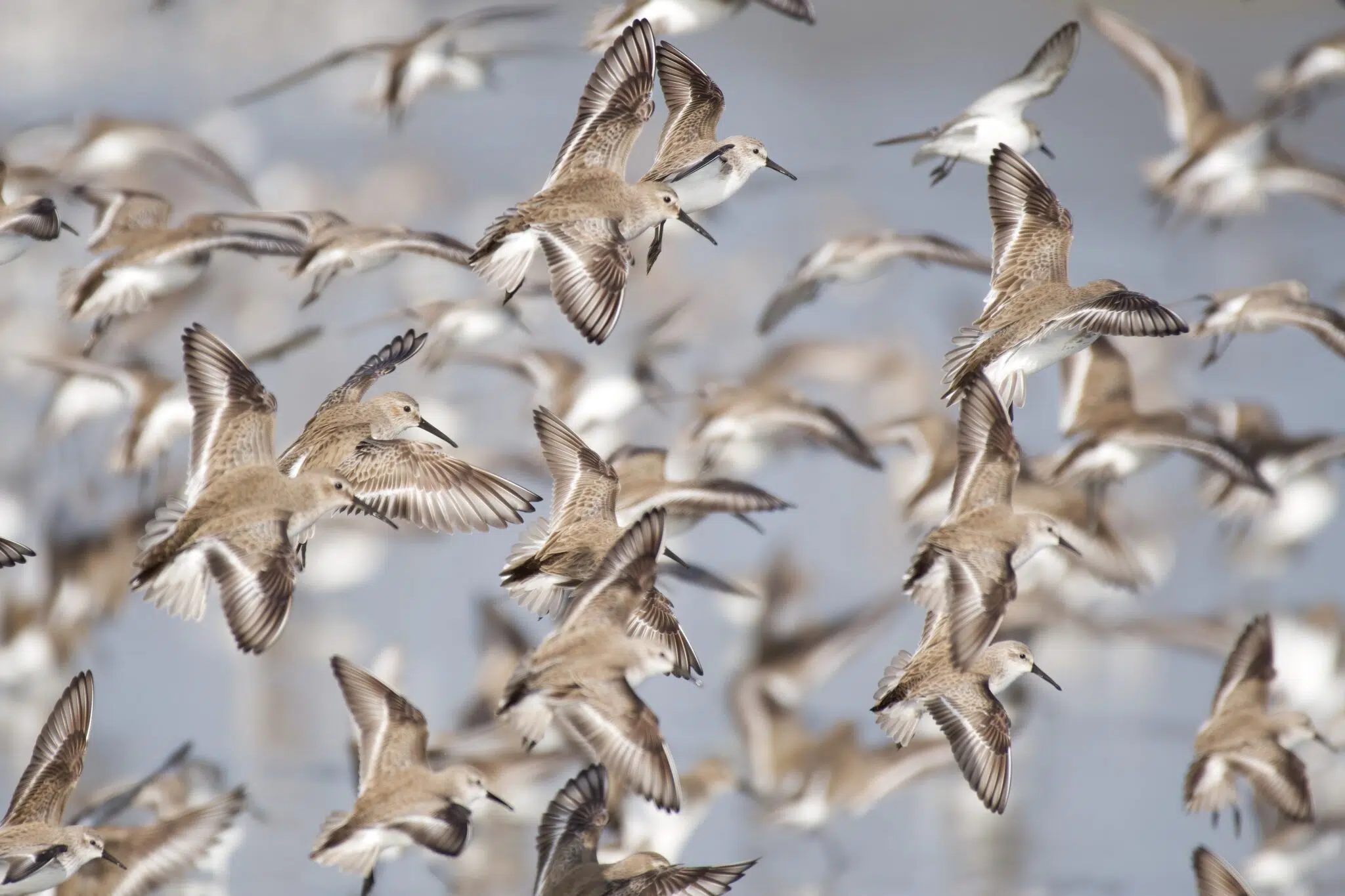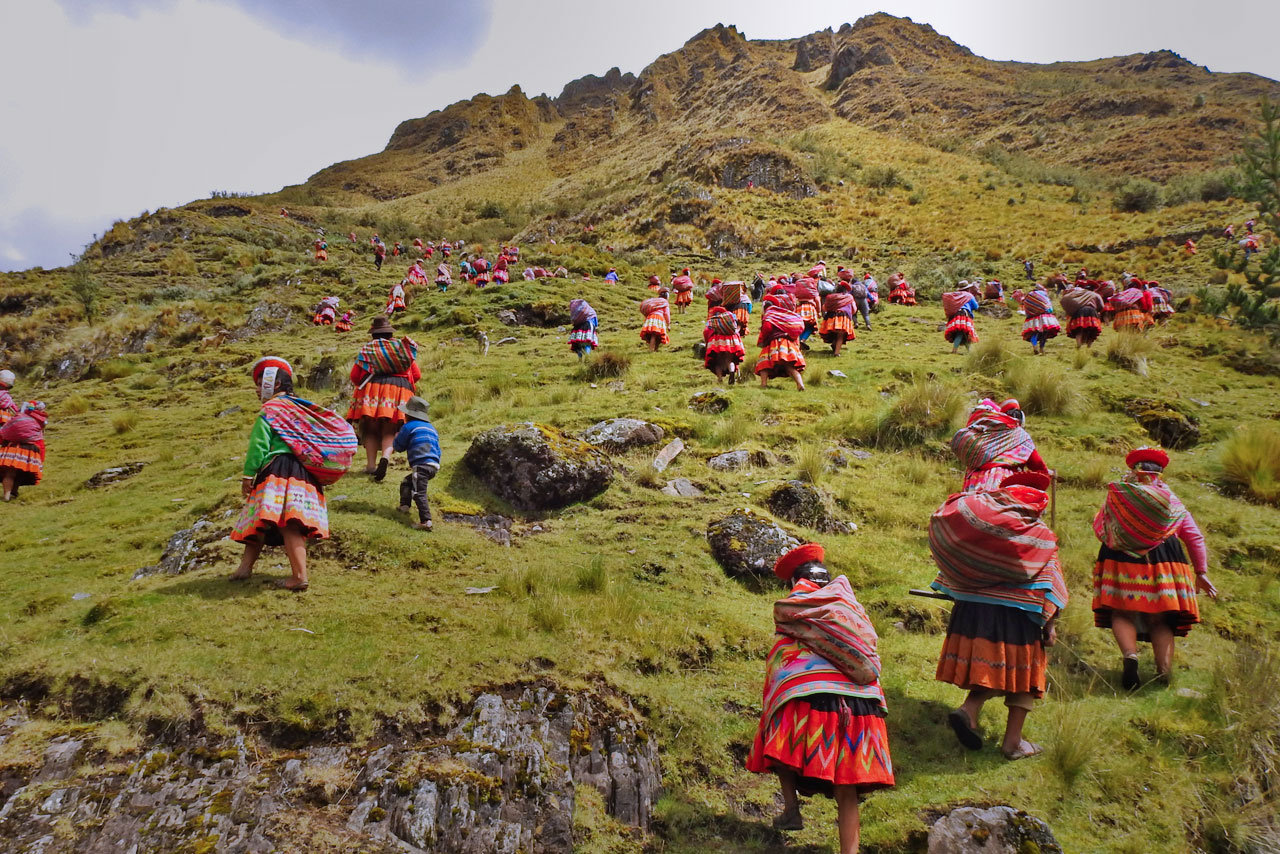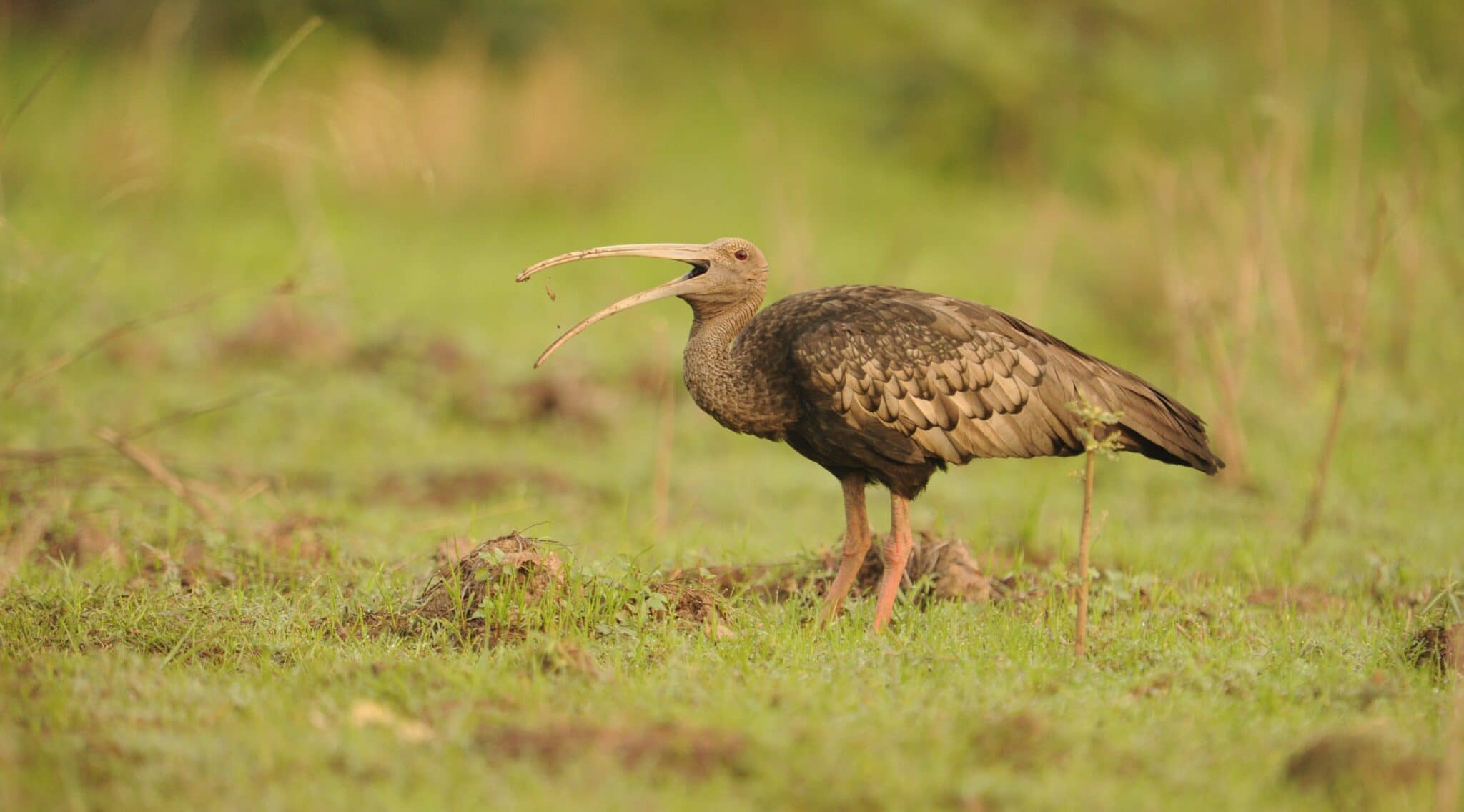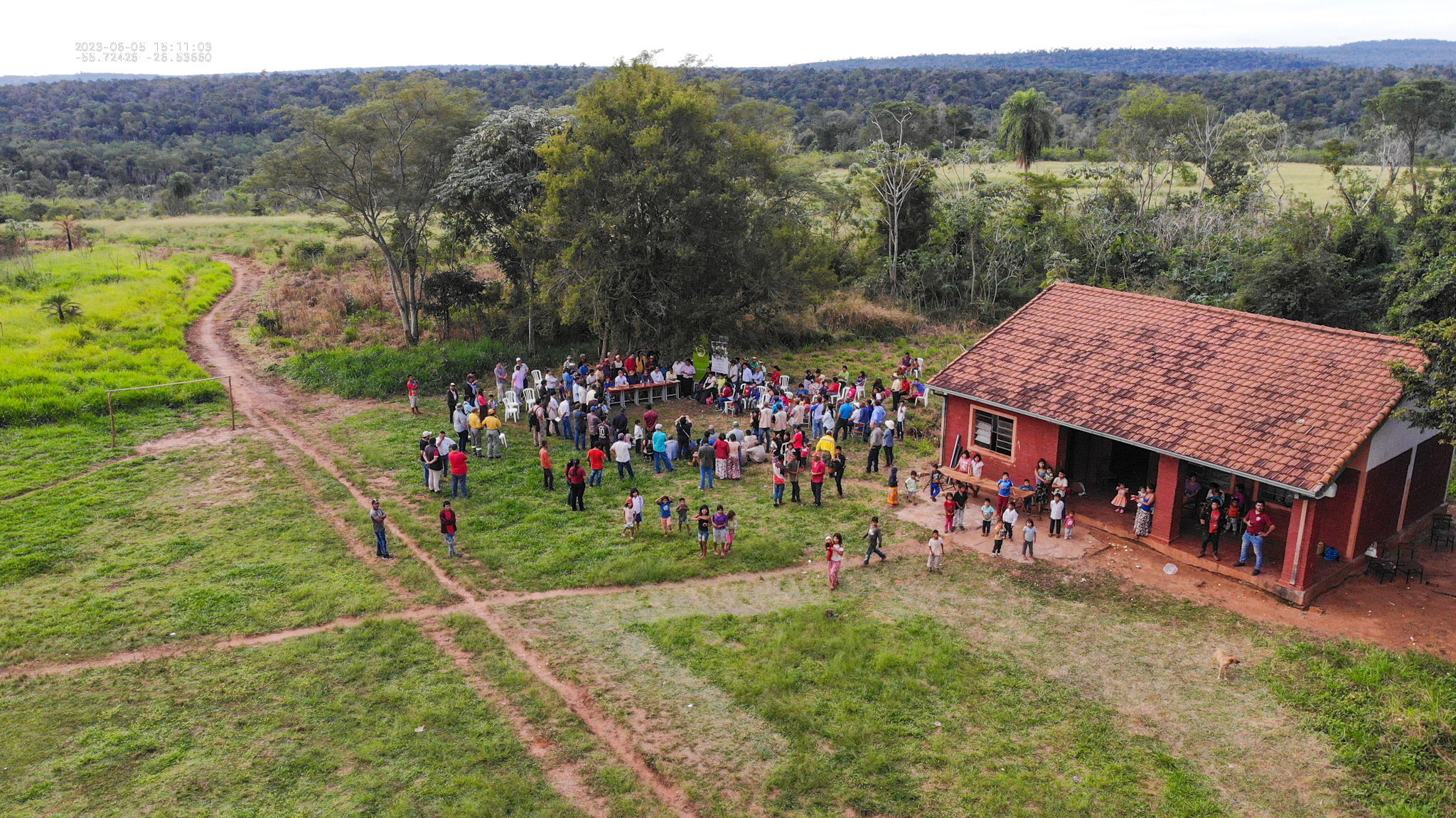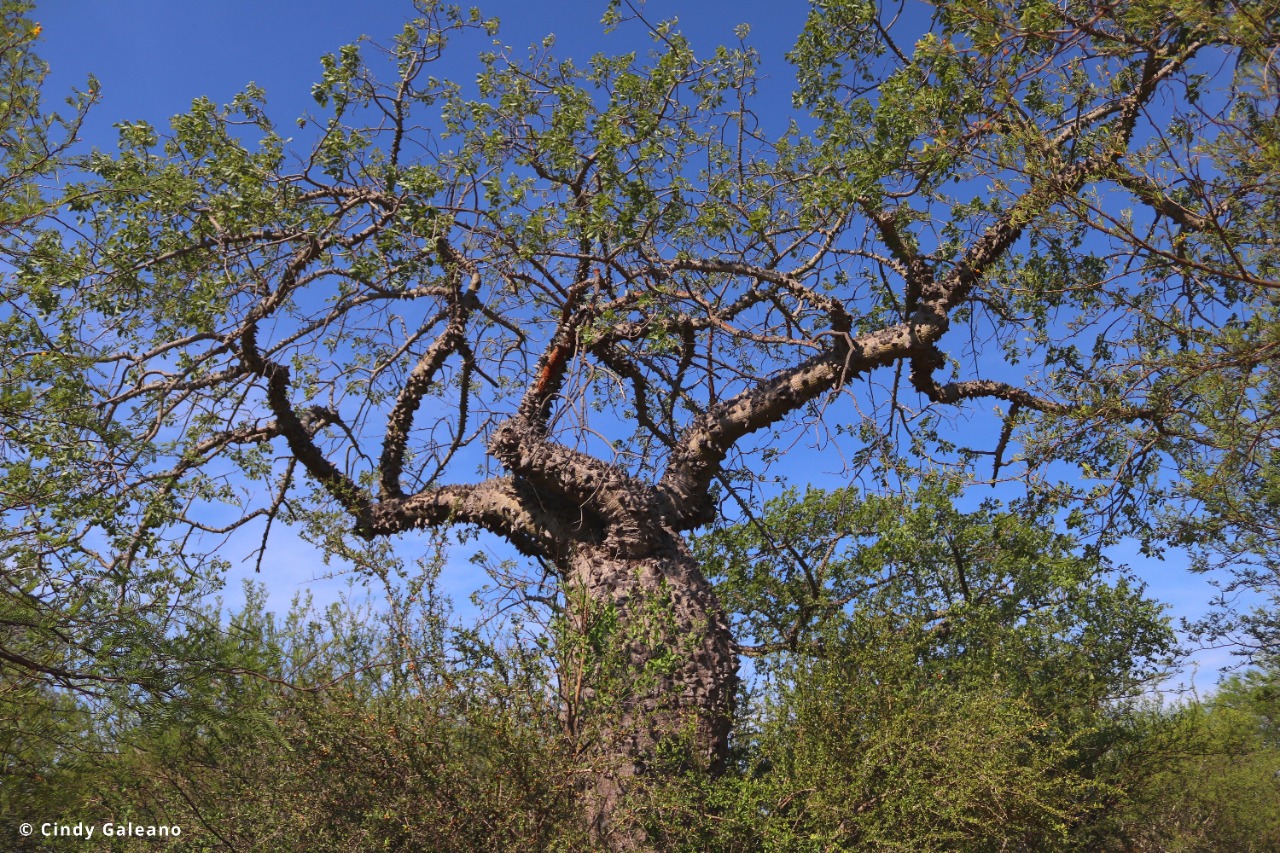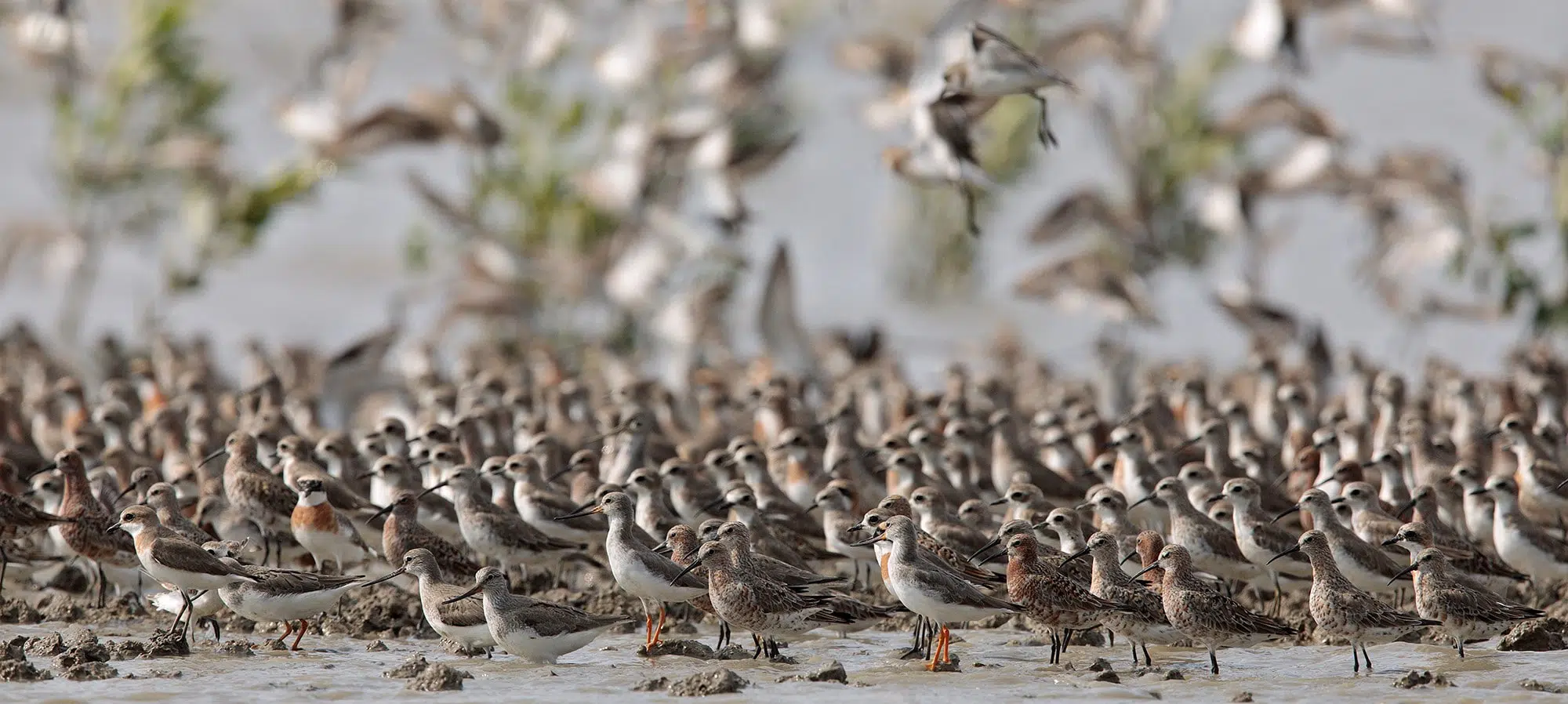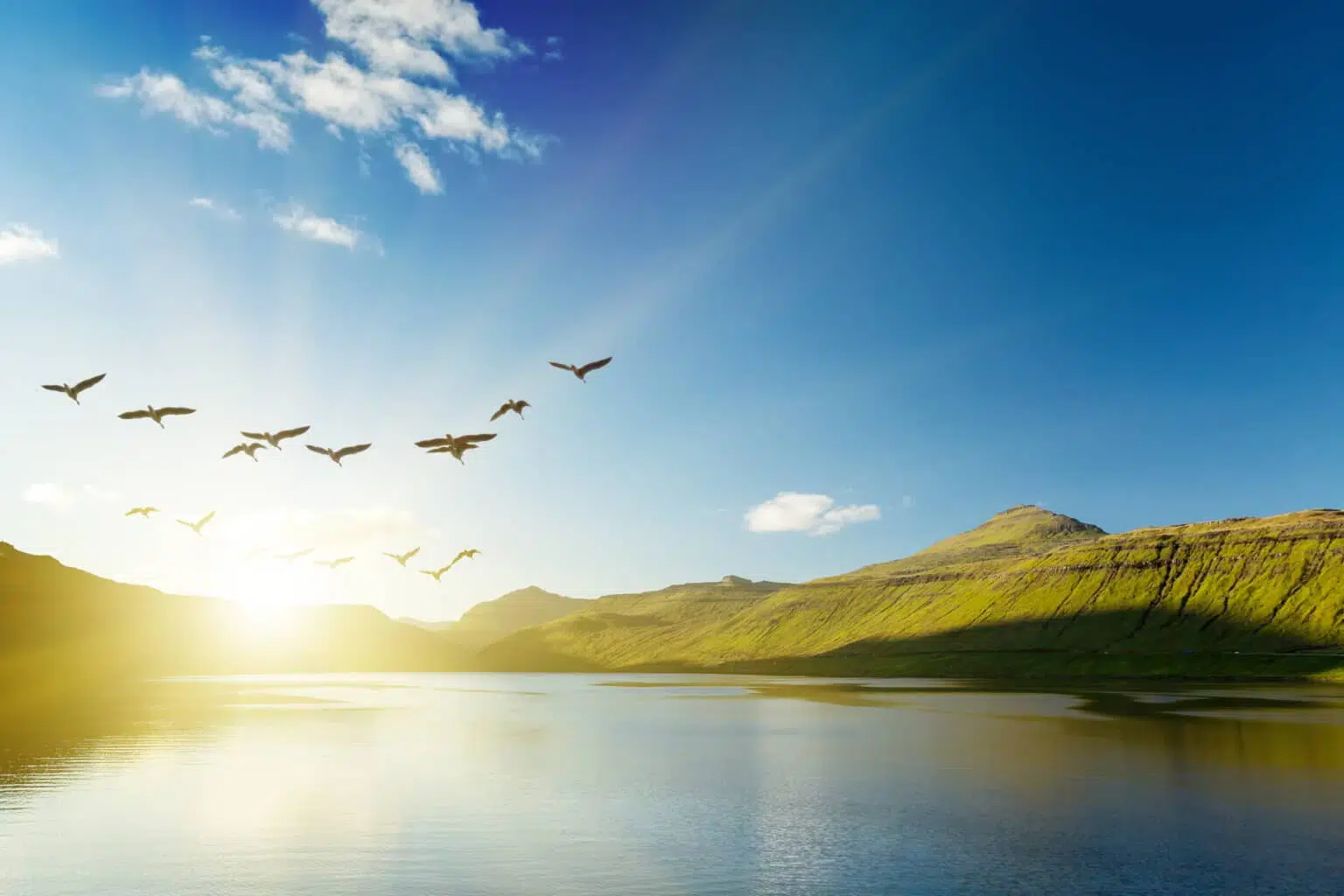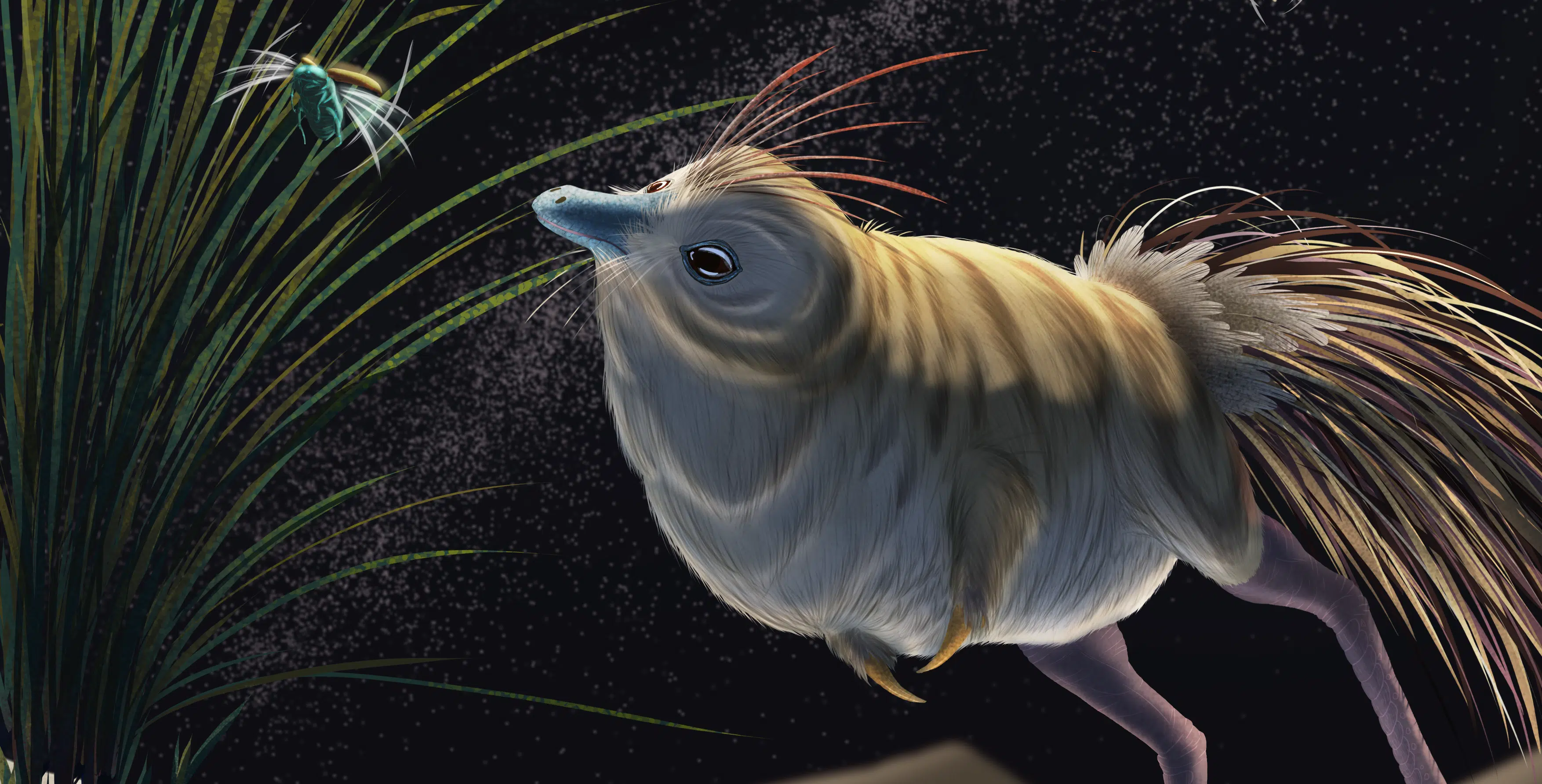On 14 October, people in 191 countries around the world joined together to celebrate birds for October Big Day. More than 36,000 people contributed 83,735 checklists, setting three new records for the single biggest day in October birding history.
E.J. McAdams, Chief Development Officer at BirdLife International and Executive Director of Friends of BirdLife International in the United States, said:
“Global Bird Weekend is not just a celebration of birds, it’s a call to action. Sometimes it may be hard to take in the scale at which BirdLife works or the diversity of members living around the globe. But, by participating in this event and contributing to our fundraising efforts, people are actively shaping the future of birds and their habitats.
BirdLife staff, other members, and our Advisory Group all went out and came back with amazing sightings, such as the endangered Purple-naped Lory (Indonesia), Long-tailed Shrike (Nepal), Sacred Kingfisher (Australia), Sabine’s Gull (Netherlands), Schlegel’s Asity (Madagascar), and others.”
This year’s October Big Day was also an opportunity to celebrate World Migratory Bird Day and Global Bird Weekend. Tremendous thanks to eBird, Global Birding’s Tim Appleton MBE and Penny Robinson and Swarovski Optik for making Global Bird Weekend possible, and to the World Migratory Bird Day team for their efforts.
We would also like to say a big thanks to Stowe Family Law who donated £1,000 to our efforts.
The global birding community reported 7,525 species—an incredible 72 more than last October Big Day. This remarkable growth is a testament to the power of birds to unite people in a common effort.
Tim Appleton MBE and Penny Robinson from Global Birding said: “It’s always exciting to see how many people react so positively when we reach out to them, especially for these events. We love to encourage those in more remote areas to be part of the Global Birding Community. This year we are delighted that so many smaller groups have joined together as birds unite our world. We are incredibly grateful to all the teams who joined in, from the international teams to much smaller local groups including many youth organisations and schools who participated across the globe.”
Header Image: © Barend van Gemerden

“I was high in the Austrian mountains with not a soul in sight, but it was an amazing feeling to be connected with birders around the world.”
Dale Forbes, Swarovski Optik

On Saturday 29th July 2023, 45 birdwatchers braved the chilly morning in Kenya’s capital to connect with nature through a bird watching excursion at the Nairobi National Park (NNP). The bird walk was part of the New York Times Birding Project. The project, a citizen science initiative, encourages people to contribute bird data using eBird and Merlin Apps. BirdLife International is supporting the project through hosting bird walks, with the first in the series taking place in New York City on 28th July, and Nairobi & Singapore on 29th July.
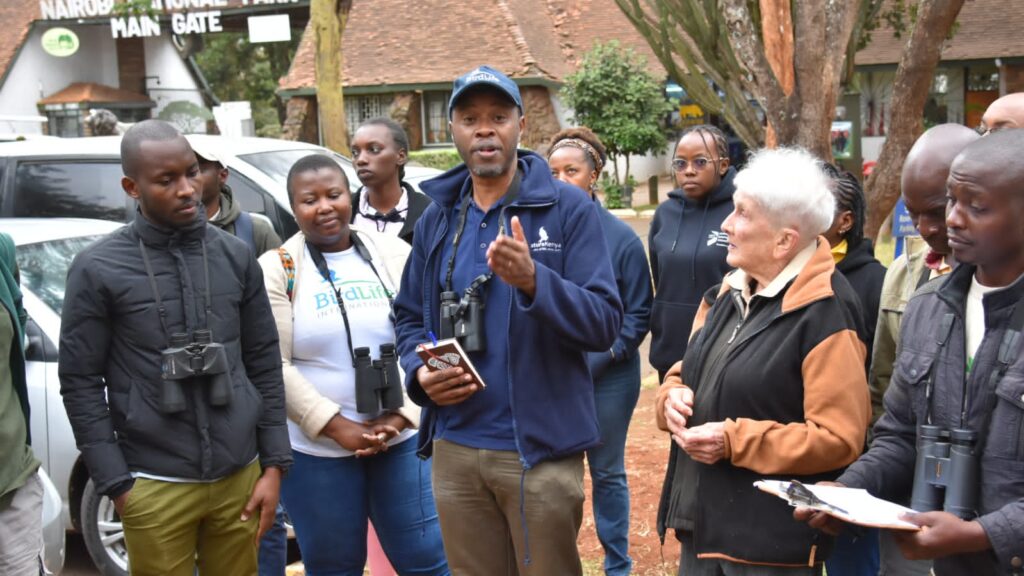
A Birding Haven
Kenya is home to more than 1,100 bird species of which 46 are globally threatened. Covering about 117 square kilometers, NNP is the only national park in the world that exists within a capital city. A Key Biodiversity Area (KBA), the park is home to various species including lions, giraffes, and buffaloes among others. In addition, almost 500 bird species have been recorded at the park.
BirdLife International, Nature Kenya (BirdLife Partner in Kenya) and over 100 other national BirdLife Partner organisations are supporting protection and conservation of these areas – some of which fall along bird migratory flyways, and are critical feeding, resting, and breeding places for migratory birds.
In groups of four, the enthusiastic bird watchers criss-crossed the park , recording more than 110 bird species recorded within three hours. Among the highlights included several pairs of the endangered Grey Crowned- Crane (Balearica regulorum), soaring Critically Endangered White-backed Vultures (Gyps Africanus), a Martial Eagle (Polemaetus bellicosus), young ones of Spur-winged Lapwing (Vanellus spinosus) and African Darters (Anhinga rufa). Others included a group of 22 Ostriches – the world’s biggest bird – and an Oxpecker spotted sitting on an elephant sculpture.
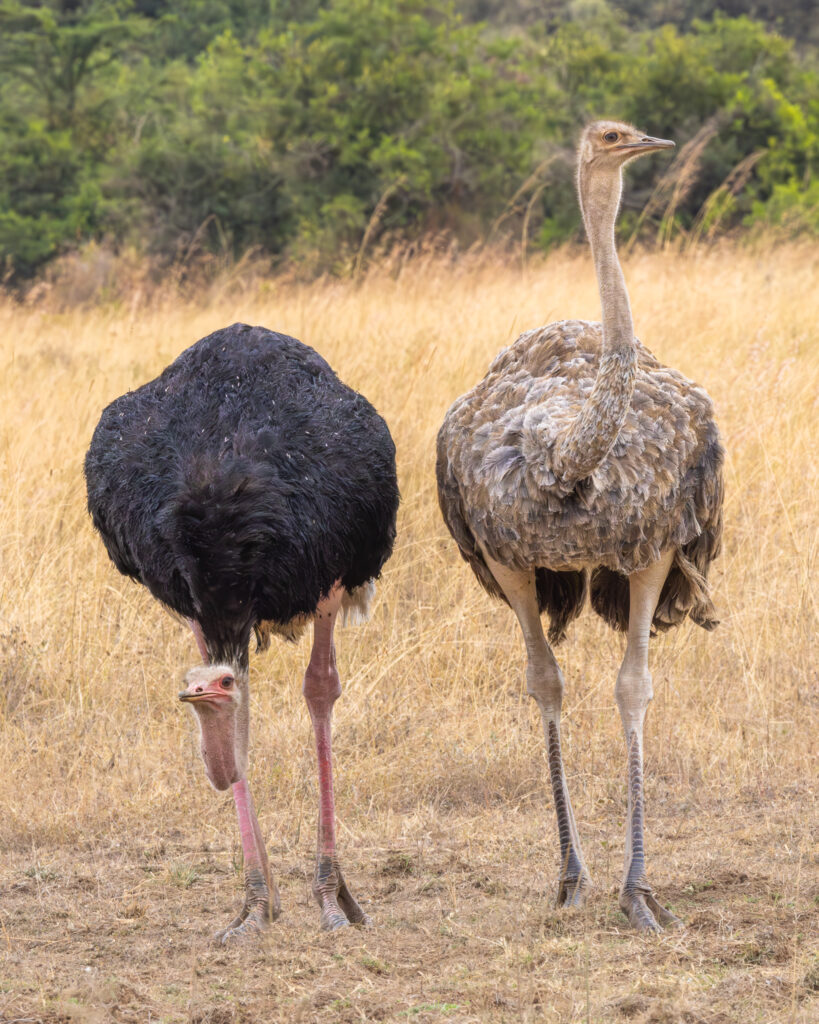
“Birds are very good indicators of the health of the environment, and citizens can help in gathering useful bird data during such bird walks”, said Paul Gacheru, Species and Sites Programme Manager, Nature Kenya.
Thus, all observations made during the event were fed into online bird observation collection platforms – eBird and Kenya Bird Map – and will contribute to much needed knowledge on distribution and numbers. The data is also critical in informing environmental management, and agriculture policies among others.
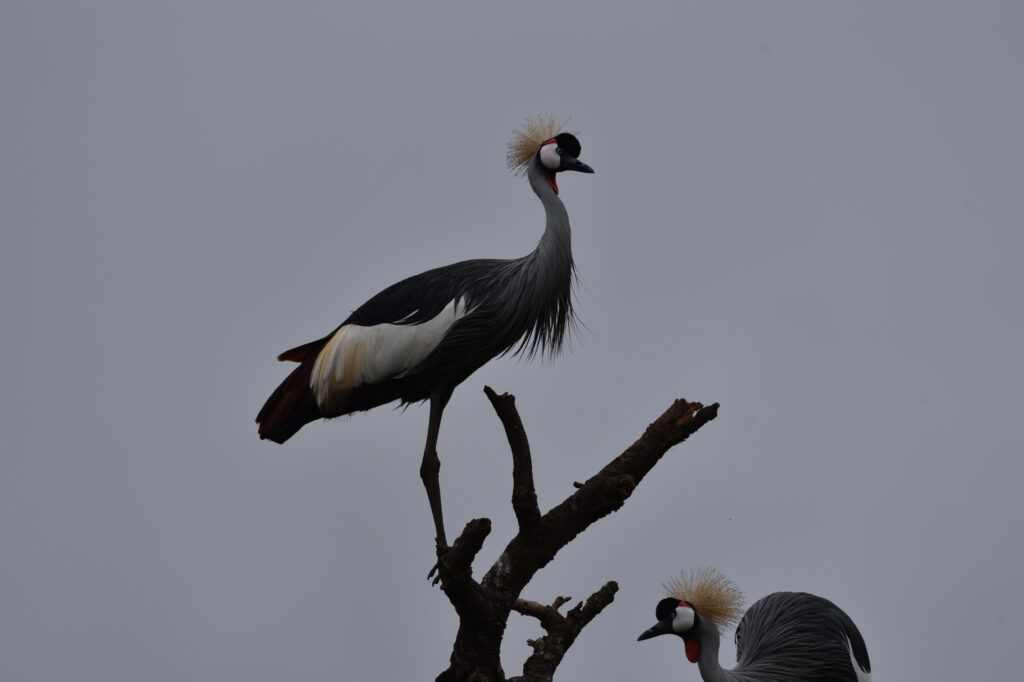
“BirdLife has shared with The New York Times that more than 600 bird species have been recorded in Nairobi, making it one of the world’s birdiest cities,” said E.J. McAdams, Chief Development Officer at BirdLife International.
“Nairobi National Park and other Key Biodiversity Areas across Kenya play a critical role in both human wellbeing and a healthy environment, and we hope that today’s event helps remind everyone about the importance of these special places,” concluded Paul Kariuki Ndang’ang’a, BirdLife International’s Regional Director for Africa.
In support of the New York Times Birding Project, BirdLife will be hosting more bird walks in August and September 2023 – Stay tuned!
Header Image: Egyptian geese spotted during the Nairobi bird walk © John Mwacharo

“Birds are very good indicators of the health of the environment, and citizens can help in gathering useful bird data during such bird walks”
Paul Gacheru, Sites and Species Manager Nature Kenya
Luego del éxito de la primera convocatoria lanzada en noviembre de 2021, el secretariado de BirdLife en las Américas abre la segunda edición para seleccionar a las mejores propuestas de conservación e investigación de pastizales naturales y sus aves en la región.
En 2021, trabajamos en Colombia en el empoderamiento de una comunidad de mujeres en las sabanas inundables para aprovechar de manera sostenible su entorno y biodiversidad en la gastronomía.
En Paraguay, investigamos la dinámica de carbono en pastizales naturales y establecimientos ganaderos para identificar buenas prácticas de manejo pastoril.
En la Pampa brasileña, desarrollamos una máquina recolectora de semillas para optimizar la restauración ecológica de estos campos.
En la provincia de Corrientes, Argentina, utilizamos tecnología avanzada para monitorear las buenas prácticas de manejo de pastizales y su relación con la conservación de aves amenazadas. También implementamos un programa de conservación a largo plazo para la Loica Pampeana. Por último, evaluamos el manejo y la recuperación de pastizales serranos invadidos por Acacia negra en la región Pampas de Argentina, utilizando aves y stocks de carbono como indicadores de cambio.
Buscamos más propuestas innovadoras y relevantes como estas.
¡Presenta tu proyecto! Para participar, revisa las bases y condiciones (español / inglés) y envía tu aplicación hasta el 30 de junio.
¡Más de 600 especies de aves endémicas y miles de aves migratorias dependen de nosotros!
*Los proyectos deben ser presentados usando este formato (Español/ Inglés)
*Aquellas propuestas que participen por primera vez recibirán hasta $6000. Las propuestas que participaron en la primera convocatoria y buscan continuidad recibirán hasta $12000.
*Al momento de contactar a los socios nacionales de BirdLife, se debe presentar un resumen ejecutivo que contenga: objetivos, línea prioritaria, especies y sitios focales.
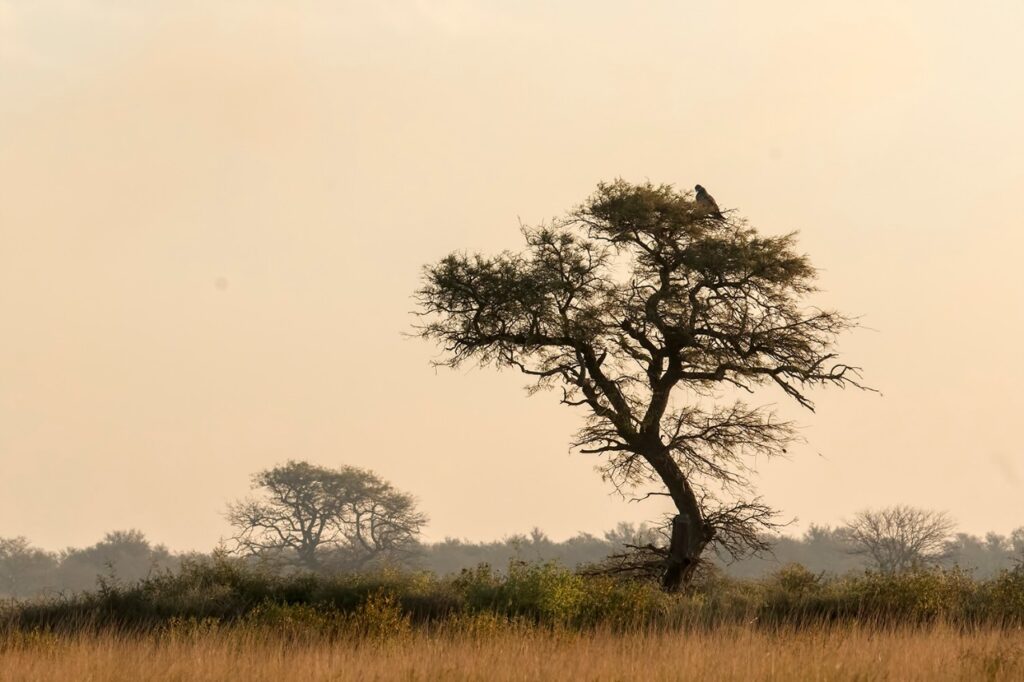
El Programa de Pequeñas Donaciones para la Conservación de Pastizales Naturales es una iniciativa liderada por BirdLife Américas que otorga fondos semilla para impulsar proyectos de conservación e investigación de pastizales naturales y sus aves en la región.
This article is part of our Spring Alive programme, which aims to inspire and educate children across Africa and Eurasia about the wonders of nature and bird migration. The 2022 Spring Alive season has been made possible with the continuing support of HeidelbergCement.
As well as our usual programme of lessons, workshops and activities, Spring Alive is kicking off 2022 with a brand new website, which will provide an updated platform for activities, teaching resources and news. The public will also be able to log their sightings of the seven Spring Alive focal species on our interactive map, which will record the birds’ progress in real time as they migrate from country to country. It’s always fun to put yourself on the map, but citizen science initiatives such as these are not just enjoyable – they also play an important role in scientific research and public engagement. Here’s everything you need to know about citizen science and how you can take part.
What is citizen science?
Put simply, citizen science is scientific research conducted by people who are not professional scientists. Some of the biggest discoveries in the world have been made by people without official scientific qualifications or funding. For example, the planet Uranus was discovered in 1781 by amateur astronomist William Herschel, who built his own telescope and earned a living as a musician. Even the famous naturalist Charles Darwin, who came up with the theory of evolution, originally trained as a doctor.
Anyone can be a citizen scientist. Community volunteers are especially useful in big projects where scientists need to gather information from across the whole country, or even the whole world. In these situations, there are not enough qualified scientists to carry out this research all by themselves, so the help of the general public is vital.
Citizen scientists don’t have to be experts. Often, the tasks are quite simple – for example photographing plants or spotting birds in the garden. With more complex tasks, volunteeers will be given training on exactly what to do. Then they will send their observations back to the scientists running the project, who put them all together and study the results.
How does citizen science help birds?
Birds can be found in almost every part of the world and often migrate vast distances. Citizen science can help us keep track of bird numbers and how they are changing around the globe. With this information, we can identify species and habitats that are under threat, and act to help them. For example, the volunteer bird counters of the Pan European Common Bird Monitoring Scheme helped to discover that Europe has lost around 600 million breeding birds in the last 40 years, in large part due to intensive farming. Meanwhile, citizens across the world use the Natura Alert mobile phone app to report any dangers that are threatening their local Important Bird & Biodiversity Areas, prompting conservation groups to take action.
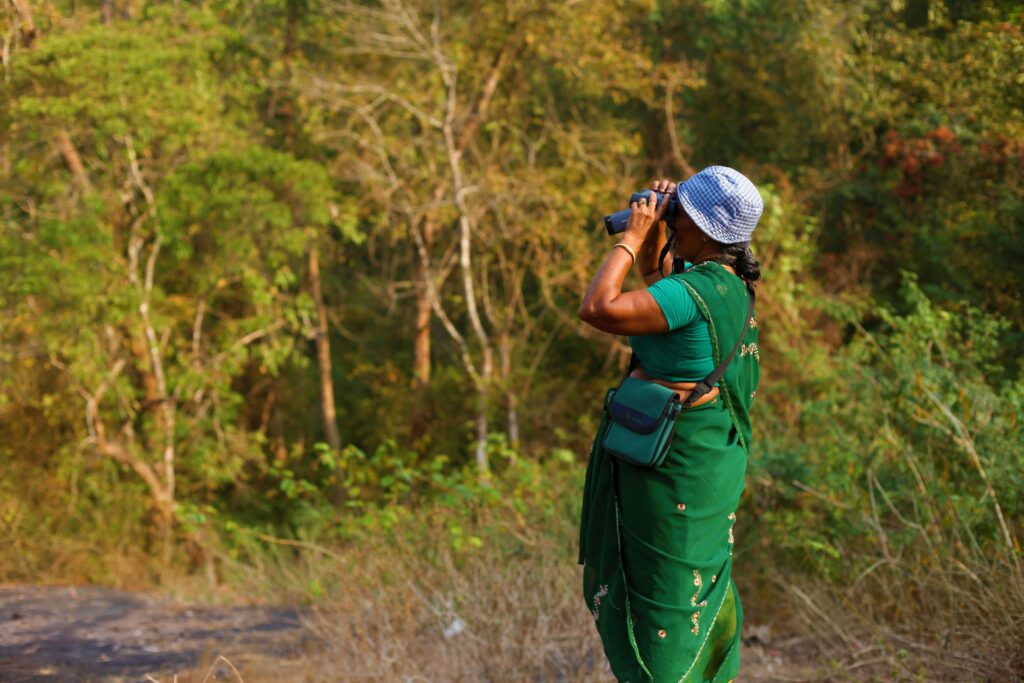
Birds are also found in remote areas that are difficult for scientists to access. Local people can help here, too. In 2021, two friends were out gathering materials in the Borneo rainforest when they came across an unfamiliar bird species. After sending a photograph to their local birdwatching group, they learned that they had rediscovered the Black-browed Babbler – a species lost for 172 years and feared extinct.
Another way that citizen science helps birds is by encouraging people to love and respect nature. Spending time watching and learning about birds makes people more likely to protect them. This idea has been around for centuries: in 1900 ornithologist Framk M. Chapman launched the ongoing Audubon Christmas Bird Count in the USA to replace the traditional Christmas bird hunting contest that killed thousands of birds a year. In Cyprus, where bird hunting is still ingrained in the local culture, our partner BirdLife Cyprus released a children’s bird guide, What’s that bird?, to inspire a new generation of nature lovers.
How can I get involved?
There are lots of different citizen science projects to choose from. One fun way for young people to get involved is to enter sightings of the Spring Alive species on our website. This will help us to keep track of the birds’ migrations as the waves of species move across the map.
Get in touch with your national Spring Alive Partner to learn about citizen science projects in your country, or if you’re looking for something more global, download the eBird mobile app, where you can log your bird sightings wherever you are in the world. If you just want a taster, consider signing up to a one-off bird count event such as Global Big Day, Global Bird Weekend or EuroBirdwatch. Outside of these, if you see any unusual wildlife or spot threats to nature, you can always report them directly to your local conservation group.
When taking part in a citizen science project, follow the guidelines carefully and try not to disturb wildlife. Unless instructed otherwise, try to stay local or use eco-friendly modes of transport to reduce fuel emissions. Always make sure the information you enter is accurate – for example, by consulting a bird guide – and ask the organisers if you’re unsure about anything. This will ensure that your observations are as useful and scientific as possible, and can help us to direct conservation action where it’s most needed.
Stay up to date
Sign up to receive the latest bird conservation news. You’ll also receive updates about our projects, science and other ways to get involved including fundraising.
Thank you for your support, we are committed to protecting your personal information and privacy. For more information on how we use your data, please see our Privacy Policy. You can unsubscribe from emails at any time by using the link in the footer of any email from us.


It’s fitting that an image of Rose-ringed Parakeet appears on the cover of this new book, which is subtitled Distribution, Ecology, and Impacts of the World’s Most Colorful Colonizers. No other member of the parrot family is so widely distributed or has had as much impact as this Old World psittacid, which is now found in more than 35 countries across five continents.
Its successful spread following accidental or deliberate introduction earns Rose-ringed Parakeet a chapter of its own, and in this we learn that the availability of climatic niches, genetic diversity (all four subspecies have contributed to naturalised populations), and phenological and behavioural flexibility are among the keys to its proliferation. With that success come impacts as diverse as competition with native bird species and bats for nest cavities, damage to crops and noise pollution. In Europe, where the non-native population numbers at least 85,000, it is considered one of the continent’s top 100 ‘worst alien species’.
Rose-ringed Parakeet may be the best-known example, but no fewer than 75 of the world’s 350-plus parrot species now have established breeding populations in countries where they were introduced, and in total some 300 species have been transported to other countries through the caged bird trade.
This comprehensive work brings together a wealth of research related to this fascinating field, divided into two sections. Part 1, on background and ecology, includes an overview of the world parrot trade, the distribution of naturalised populations – with USA, Mexico, Europe, Kenya, China, Indonesia and Australia all looming large on the world map – ecological impacts, and the question as to whether naturalised parrots are priority invasive species.
Part II brings together a range of case studies, including of the originally South American Monk Parakeet, now established in 27 countries on five continents, as well as Rose-ringed Parakeet, but also focuses geographically on introduced and naturalised psittacids in the contiguous United States, Hawaii, Europe, Spain and Portugal, South Africa and Australia.
The closing chapter on the future of naturalised parrots, by the book’s editor, includes an interesting comparison of the US ranges of the extinct but once abundant Carolina Parakeet and the invasive Monk Parakeet, and also the contrasting views of naturalised parrot species between the more “tolerant” and welcoming general public and “concerned” land managers, policy makers and biologists. Only time will tell which view will prevail but, despite some control measures outlined earlier in the book, Pruett-Jones concludes that “the future of the world is likely one with many naturalized species of parrots.”
Above: The Rose-ringed Parakeet is the world’s most widespread parrots. Photo © Bjorn Olesen
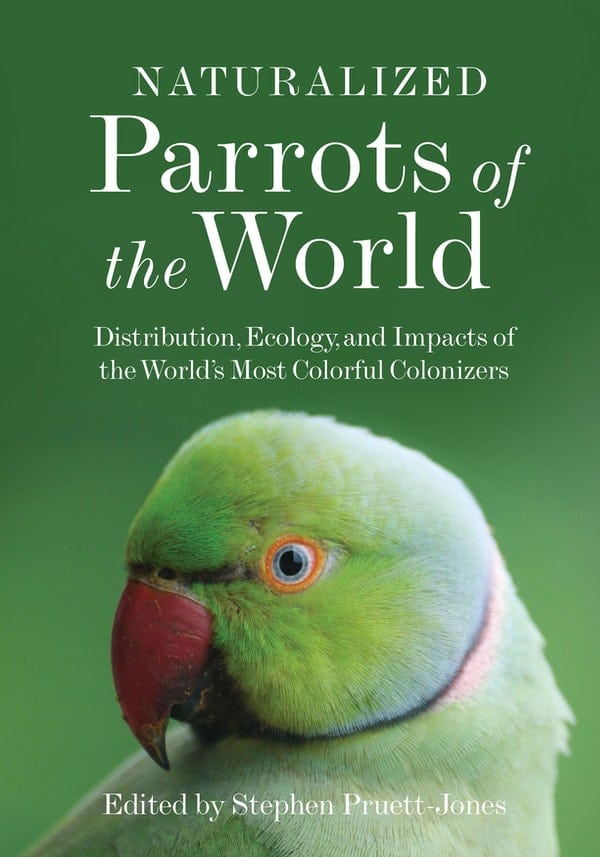
Stay up to date
Sign up to receive the latest bird conservation news. You’ll also receive updates about our projects, science and other ways to get involved including fundraising.
Thank you for your support, we are committed to protecting your personal information and privacy. For more information on how we use your data, please see our Privacy Policy. You can unsubscribe from emails at any time by using the link in the footer of any email from us.


Lying in the shadow of the Andes to the west, the dry ecosystem of the Gran Chaco stretches from Argentina into south-eastern Bolivia, Paraguay and south-western Brazil. Twice the size of France, it is large enough to influence weather patterns affecting the adjacent Pantanal wetlands and Brazil’s Cerrado grasslands.
The largely dry forest and savannah region, interspersed with fresh and saline lagoons, supports a diversity of species adapted to the rigors and extremes of this complex region. It is not uncommon to come across Jaguars, Giant Armadillos, Giant Anteaters, flocks of Chilean Flamingos and a range of endemic bird species. Just a few examples include Quebracho Crested-tinamou, Chaco Chachalaca, Black-legged Seriema, Spot-winged Falconet, Great Rufous Woodcreeper and Many-colored Chaco-finch.
In addition to the important geographical characteristics of the Gran Chaco, its social and cultural diversity is unique. The region’s human presence dates back approximately 7,000 years. Indigenous peoples, including groups of nomadic hunter-gatherers, fishermen and sedentary farming communities, have developed a culture closely linked to the region’s natural resources. Today, the Chaco is represented by a fusion of cultures and ethnic groups reflecting recent waves of European migrants who arrived in the 18th and 19th centuries, attracted to the region’s fertile lands.
Over the last few decades, the Gran Chaco has undergone a drastic transformation. According to World Wide Fund for Nature in 2020, it had one of the highest deforestation rates globally, driven mainly by genetically modified soy production and large-scale cattle ranching. So far, most efforts to control the rate of loss have been unsuccessful, although deforestation rates are slowing in some areas. The fragmentation of the landscape is placing enormous pressures on communities – local and indigenous – with droughts, fire and flooding increasing across the landscape.
Vital for migrants
Recent studies of migratory species reveal that the Gran Chaco is also an important wintering area for a suite of migratory birds that breed in the Arctic, temperate North America and the Neotropics, including shorebirds and several species of songbirds and raptors whose populations have been declining across their ranges.
While past studies revealed the Gran Chaco’s general importance for some of these migratory species, limited data on their movements and habitat use make it difficult to determine preferred habitats and associated threats. A recent study on Yellow-billed Cuckoo is beginning to change all of this.
Yellow-billed Cuckoo is a migratory species that manages to stay well hidden in deciduous woodlands. According to the Cornell Lab of Ornithology’s description, they usually sit stock still, even hunching their shoulders to conceal their crisp white underparts, as they hunt for large caterpillars. Bold white spots on the tail’s underside are often the most visible feature on a shaded perch. This species has one of the shortest nest cycles of any bird – a mere 17 days from incubation to fledgling. In eastern North America, cuckoos are still relatively common, but western populations have plummeted and are candidates for federal Endangered status in the US (fewer than 500 individuals). In the west they are already listed as federally threatened.
By Ian Davidson
Above: the Silk Floss Tree, known as Palo borracho (literally ‘drunken stick’ in Spanish), is an emblematic species of the Chaco. It is resistant to drought and stores water in its bulging, tilted trunk © Cindy Galeano / Guyra Paraguay
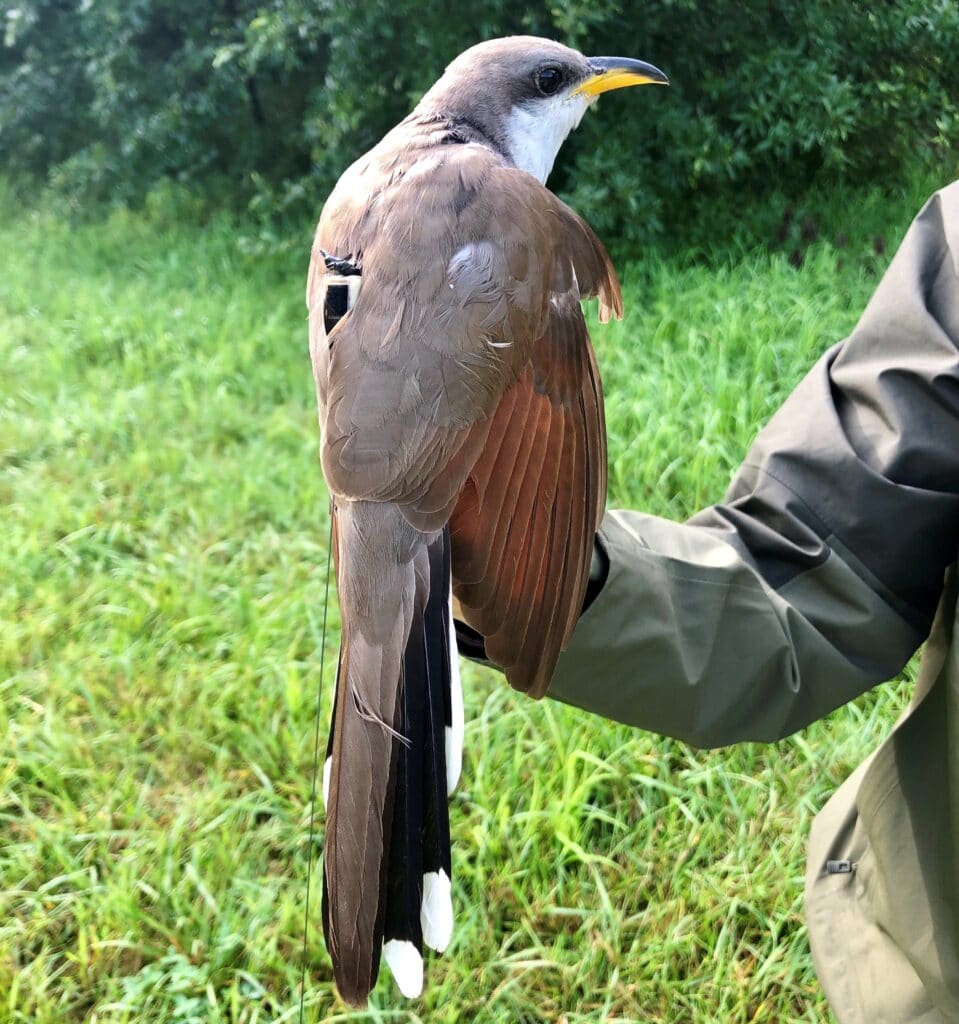
The two breeding populations converge in the western Amazon basin during their southward migration, before assembling in the Gran Chaco. It is estimated that they may spend upwards of five or six months there in separate groups, with the eastern population occupying northern areas and the western population the central-western region. While in the Gran Chaco, Yellow-billed Cuckoos mix with native and resident cuckoo species, including Guira Cuckoo (guira meaning ‘bird’ in Guarani; similar to the name of the BirdLife Partner, Guyra Paraguay).
Through the auspices of Georgetown University in the US, researchers are trying to determine geographic linkages of migratory species between different stages of their annual cycles, including between breeding, migration and non-breeding stages. Previously, our inability to make these connections has been a major impediment to understanding population declines in migratory birds.
However, recent tracking data suggest that Yellow-billed Cuckoos make multiple long-distance movements throughout the wintering period and occupy a diversity of habitats. The information gathered from tracking Yellow-billed Cuckoo provides critical information for better understanding of what is driving the species’ decline. With this information, conservation practitioners will be better positioned to take effective conservation action for the species.
Conservation in action
Since its formation in 1997, Guyra Paraguay has been at the forefront of conservation in the Gran Chaco. Dedicated to conserving and promoting the sustainable use of biodiversity in Paraguay, it has worked with a range of important stakeholders, actively promoting the region’s protection.
“The good news is that the protected areas in the Paraguayan Chaco are still fairly well connected, allowing for wildlife to range across this vast landscape from one reserve to another,” said Rodrigo Zarate, Head of Conservation for Guyra Paraguay. “But we must act now to ensure that private landholders and communities are incentivised to leave their forests standing.”
“We must act now to ensure that private landholders and communities are incentivised to leave their forests standing.”Rodrigo Zarate, Head of Conservation, Guyra Paraguay
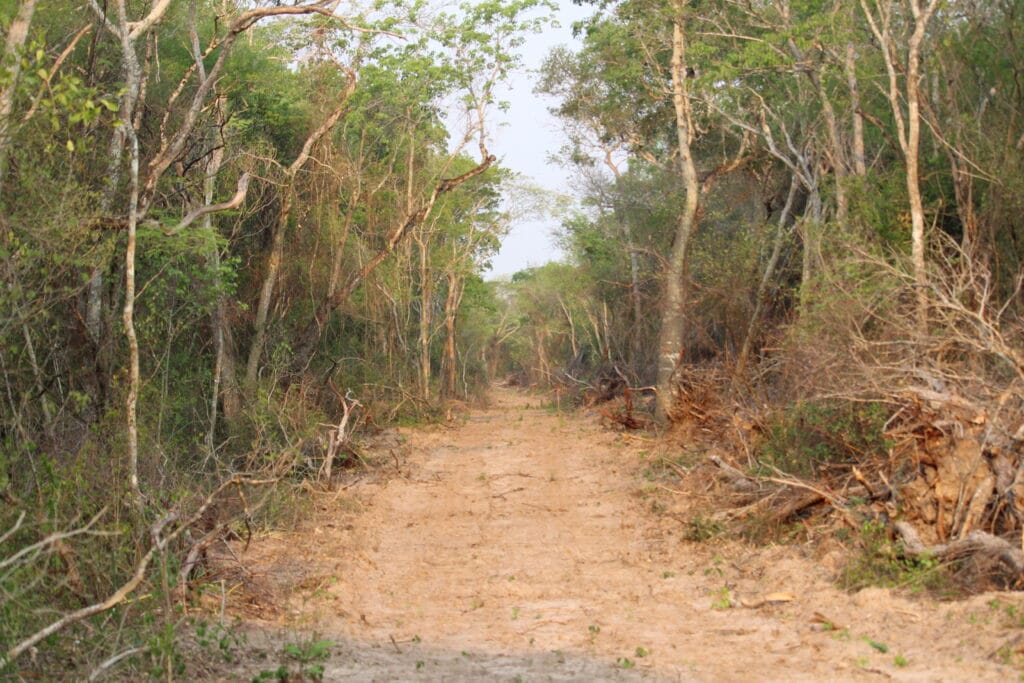
As part of its efforts in the landscape, and with the support of the World Land Trust and others, Guyra Paraguay purchased properties in the Gran Chaco to create three private reserves – Reserva Cañada El Carmen, Reserva Campo Iris and Reserva Pantanal Paraguayo. With an extension of almost 21,000 hectares, these reserves provide refuge for a diversity of resident and endemic Chaco species.
Recognising the cuckoo’s eye-catching features and relative abundance in the Gran Chaco at certain times of the year, Guyra Paraguay set out to raise awareness of the forest’s national and international importance for migratory species. With funds from the United States Fish and Wildlife Service through the Neotropical Migratory Bird Conservation Act, Guyra Paraguay brought the plight of the cuckoo and its need for intact Gran Chaco forest to the attention of local communities working adjacent to their private reserves.
The fate of the Gran Chaco’s birds and wildlife will depend on finding creative approaches to sustainable development in the region, and making sure these models are compatible with the natural environment. In certain areas, climate change is expected to increase the frequency and intensity of drought, putting the agricultural economies of the region at risk. Guyra Paraguay now aims to begin working with local government and private landholders to maintain and restore native vegetation in key watersheds and natural lagoons. This will protect key habitat for wildlife, while ensuring the long-term provisioning of fresh water for people.
While conservation efforts in the Gran Chaco continue, National Audubon and the American Bird Conservancy (BirdLife Partners in the United States) are working to safeguard the breeding habitat of cuckoos, including the threatened western population, whose preferred riverside breeding areas have given way to farms and housing. Together, BirdLife Partners along the flyway are aiming to protect this global heritage for the benefit of birds and people.
Stay up to date
Sign up to receive the latest bird conservation news. You’ll also receive updates about our projects, science and other ways to get involved including fundraising.
Thank you for your support, we are committed to protecting your personal information and privacy. For more information on how we use your data, please see our Privacy Policy. You can unsubscribe from emails at any time by using the link in the footer of any email from us.


Peru is home to more than 15% of the world’s bird species: an astonishing 1,861 in total, 138 of them found nowhere else on Earth. From the arid plains of the Pacific coast to the mountainous Andes and the tropical rainforests of the Amazon basin, its varied landscapes make the country a hotspot for wildlife of all kinds. BirdLife is therefore delighted to welcome a new Partner for Peru: Ecosistemas Andinos, or ECOAN for short.
Despite only joining the BirdLife family this June, ECOAN is a prominent conservation NGO in Peru with a 20-year history. Over this time, it has been working to conserve some of the country’s most threatened species through the establishment of nature reserves at Important Bird and Biodiversity Areas. It has also worked with indigenous communities to restore important high Andean forests, and raised public and political awareness of the importance of Peru’s ecosystems.
To date, its community reforestation programme has resulted in more than three million native trees being planted across Peru. As well as restoring habitat for threatened wildlife, these new forests benefit the local population by offsetting climate change, providing clean water, preventing erosion and supporting indigenous communities. To expand this project, ECOAN co-founded Acción Andina (Andean Action): the first multi-country, large-scale initiative to restore high-altitude forests across the length of the Andes. The goal is to work with local and indigenous communities to protect and restore one million hectares of this critical ecosystem over the next 25 years.
Within Peru’s borders, ECOAN has been able to protect, restore and manage more than 30,000 hectares of critical habitat so far. This has benefited a host of threatened bird species including Marvelous Spatuletail and Junin Grebe (both Endangered), as well as Royal Cinclodes (Critically Endangered). The conservation measures are also a lifeline for mammals such as Spectacled Bear (Vulnerable to extinction).
Above: Local volunteers reforesting mountain slopes as part of the Acción Andina initiative. Planting vegetation not only helps wildlife, but also safeguards against climate change, flooding and erosion © ECOAN
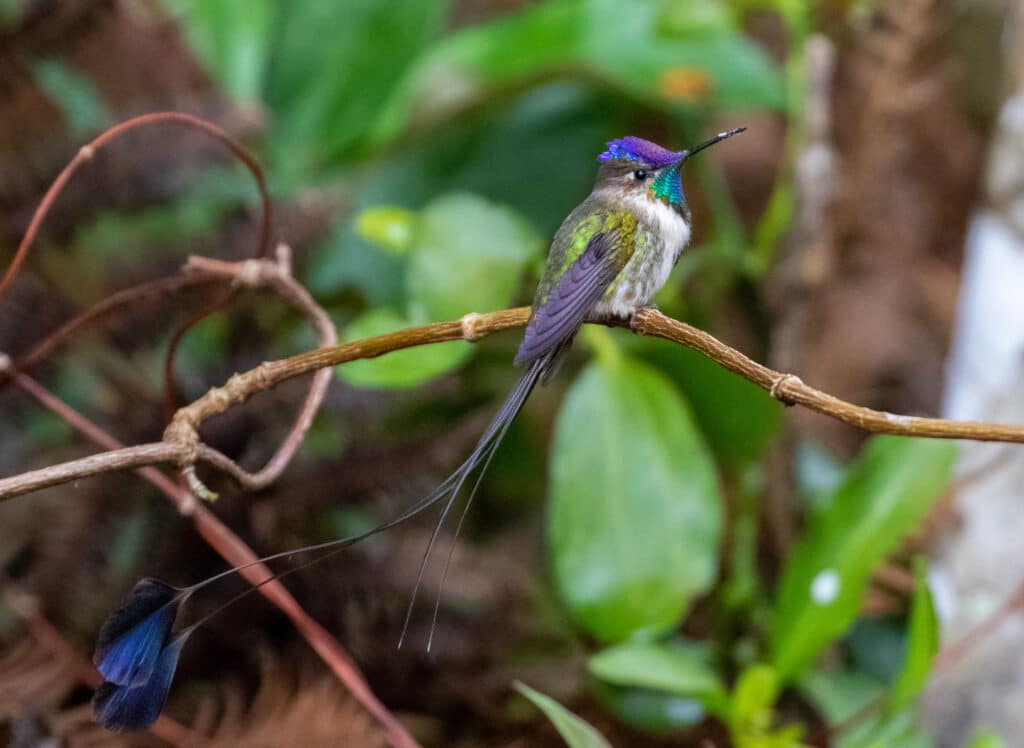
BirdLife first worked closely with ECOAN on the High Andean Wetlands conservation protect, launched in 2010. The high Andean wetlands are home to some of South America’s most threatened bird species, and are vital links in the chain of sites used by migratory birds which breed in North America. Through the project, a new protected area was created to safeguard the breeding grounds of Hooded Grebe (Critically Endangered), and other protected areas have been strengthened and extended. Thanks to the success of this collaboration, there is now much greater public, political and scientific knowledge of the importance of this vital ecosystem.
“Since 2007, when I first worked at BirdLife, there was great interest on the part of ECOAN to become a BirdLife partner,” says Itala Yepez, Head of Conservation, BirdLife Americas. “Their affinity with our goals, and their focus on bird conservation in Peru, among others, made them ideal candidates for the position.”
BirdLife has already begun collaborating with ECOAN to find financing for its work in Andean forests. But despite ECOAN’s name (Ecosistemas Andinos means ‘Andean Ecosystems’ in Spanish), its work doesn’t just cover this region. The organisation is also active in the lakes and plateaus of Junín, the rainforests and deep river gorges of Amazonas, and the incredible historical landscape of Cusco, among other locations.
Constantino Auca, Chief Executive Officer of ECOAN, looks forward to expanding the reach of the organisation as part of the BirdLife Partnership: “In the last 21 years, ECOAN has grown and shown really important impacts on a large scale in Peru. ECOAN wishes to remain efficient and scale up its conservation actions. Now being a BirdLife Partner, we feel we are being given a great opportunity to join forces with other organisations in the region and at the global level for the conservation of birds and biodiversity, fulfilling our institutional mission.”
”In the last 20 years, ECOAN has grown and shown really important impacts… now we are being given a great opportunity to join forces.”Itala Yepez, Head of Conservation, BirdLife Americas
Stay up to date
Sign up to receive the latest bird conservation news. You’ll also receive updates about our projects, science and other ways to get involved including fundraising.
Thank you for your support, we are committed to protecting your personal information and privacy. For more information on how we use your data, please see our Privacy Policy. You can unsubscribe from emails at any time by using the link in the footer of any email from us.


A prized collaboration by the artist Tawaraya Sōtatsu and calligrapher Hon’ami Kōetsu, Anthology with Cranes, is held in the Kyoto Museum of Art. A scroll, the work is almost 14 m in length, and the cranes – beautifully rendered in gold and silver – stand and fly, alone and in flocks. Dating from the 17th century, the piece is revered as a celebration of Sōtatsu and Kōetsu’s friendship, and because of the core role cranes play in Japanese and wider Asian culture. With simple elegant lines Sōtatsu fills the space with the effervescent energy cranes always seem to express.
Taken more than 400 years later, David Tipling’s wonderful image of Red-crowned Cranes Grus japonensis dancing and bugling, their breath catching the sun and condensing in the chill air of Hokkaido island, captures an ageless scene. Only the sound is missing, of course, though listening to recordings on the Xeno-canto website allow a sense of how the sight, calls and movements of these remarkable birds has flooded people’s imaginations for as long as we have shared common ground.
Although Red-crowned Cranes remain Vulnerable to extinction, the story of their recovery on Hokkaido and the development of the marshes at Kushiro as a national park has been a major success. Fewer than 20 resident birds were present in the 1920s, but numbers have now grown to an average annual population of over 1,500. The Wild Bird Society of Japan (BirdLife Partner) has played a key role in supporting action for the cranes and opened a visitor centre at the Tsurui-Ito Tancho Sanctuary in 1987 – an Important Bird & Biodiversity Area and popular site with ecotourists. The close interweave of natural and cultural values in Japan has played a key role in creating momentum.
Above: An extract from Anthology with Cranes, 17th century, by painter Tawaraya Sōtatsu and calligrapher Hon’ami Kōetsu
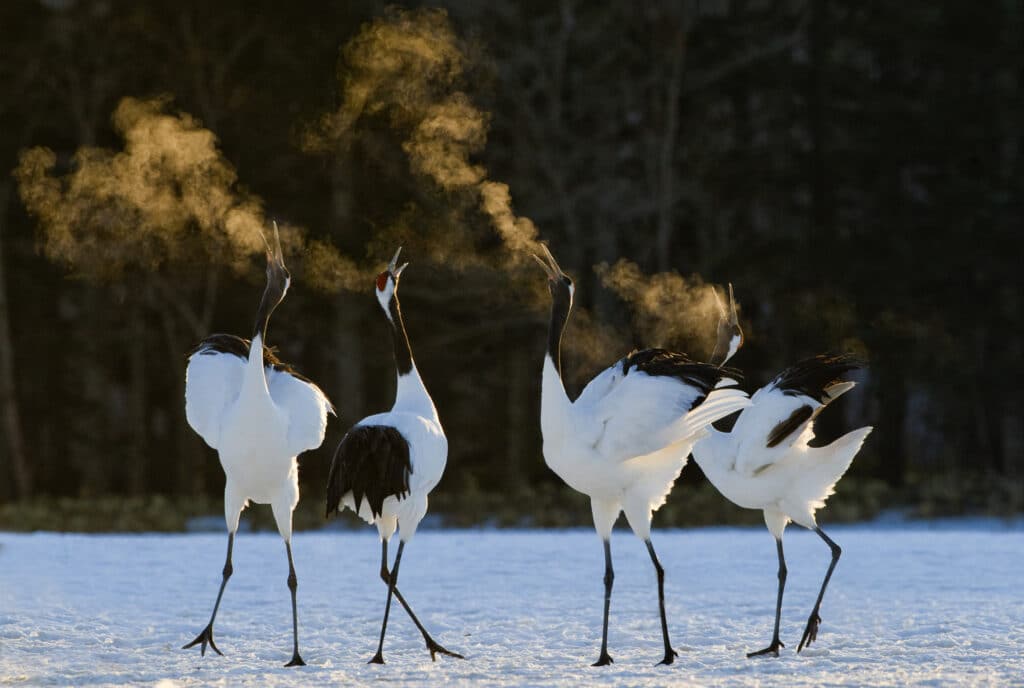
Few of us who have held paper have not, at some stage, folded a bird, or some bird-form, a pair of wings, and flown them, literally, or with arms whirling to create the magic of flight. Cranes are core to origami, and the tradition of folding a 1,000, or senzaburu, dates back to a Confucian belief that they could live to be 1,000 years old. To fold so many is to conjure up the long-standing association between these remarkable birds, longevity, happiness and good fortune.
Cranes are also closely associated with peace in Japan. In 1955, a schoolgirl named Sadako Sasaki, who had miraculously survived the atomic bomb which had devasted Hiroshima a decade earlier, fell ill with leukaemia. When a school friend visited her hospital bed bearing a gift of origami paper, she also told Sadako of senzaburu and its association with good fortune. Determined to recover, Sadako began to fold cranes, and reputedly reached 644 before succumbing to the relentless radiation cancer.
Her story soon spread, and schoolchildren from all around Japan and overseas gave money to build a monument in her memory at the Hiroshima Peace Park. A small bell hangs there, donated by the first Japanese Nobel Laureate, Hideki Yukawa. People still hang paper cranes below the bell, both to celebrate Sadako’s life, and the enduring association between cranes and peace.
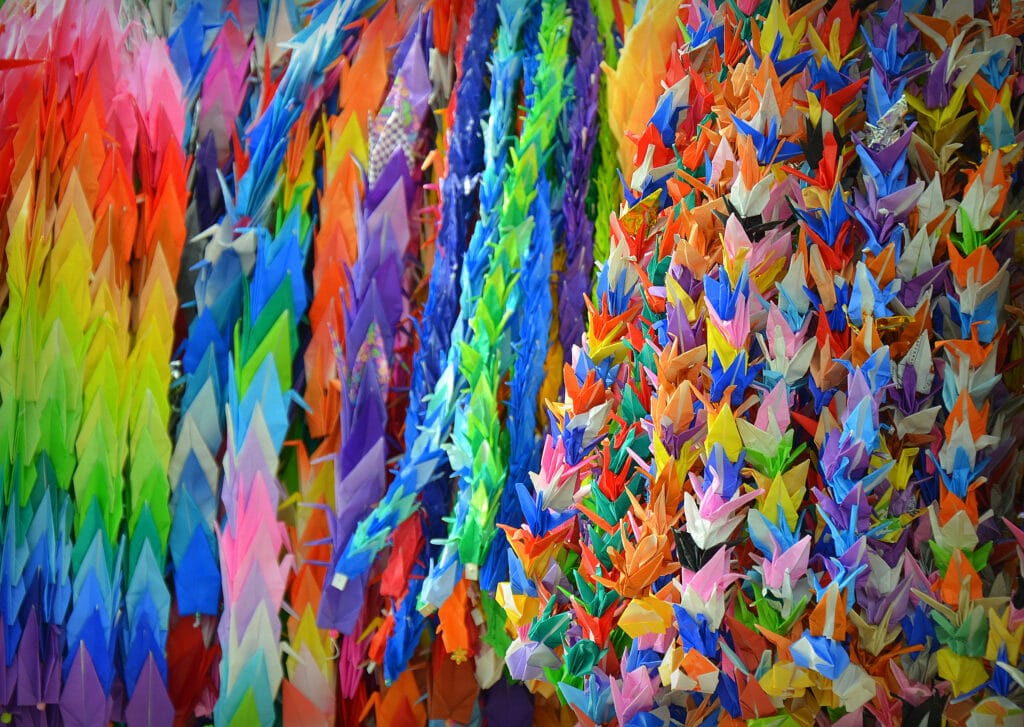
Stay up to date
Sign up to receive the latest bird conservation news. You’ll also receive updates about our projects, science and other ways to get involved including fundraising.
Thank you for your support, we are committed to protecting your personal information and privacy. For more information on how we use your data, please see our Privacy Policy. You can unsubscribe from emails at any time by using the link in the footer of any email from us.


The Bedside Book of Birds was first published in 2005 but such is its enduring appeal that The Bedside Book of Birds lives on in new editions beyond the author’s passing. In the introduction, Graeme Gibson says he came late to birds. You would not know it. Perhaps making up for lost years, he invested much effort, imagination and time assembling material for this unique volume. The result is an enriching collection arranged over nine chapters under such broad themes as birds observed and recorded (Oh, The Birds …), folk tales and parables (Death Comes as a Rooster), birds we exploit (A Bird In The Hand) and birds and the nostalgic human soul (Some Blessed Hope).
From Pliny the Elder to Peter Matthiessen via Charles Darwin, Alfred Russel Wallace, Franz Kafka and Patrick Leigh Fermor, and peppered with the author’s own material, there is writing to stimulate every mind – discovery, exploration, contemplation, philosophy, poetry, humour, religion and yet more. Unsurprisingly because of their cultural associations, some birds – albatrosses, raptors and crows, for example – feature more prominently than others, and many are also depicted in reproductions of avian art or artefacts, ranging from the paintings of Audubon and Keulemans to images of Aztec ceramics, Maori kites and Ghanaian sculpture.
The latest edition of this eclectic collection has a new foreword by Margaret Atwood, the author’s partner for more than 45 years. In it she reveals that he was surprised by the book’s success, but promptly gave away the profits: “birds had been a gift to him, and gifts must be reciprocated.” Both are well-known supporters of conservation, championing BirdLife’s work at home in Canada and internationally, and among other things serving as joint Presidents of the Rare Bird Club.
It seems fitting that this latest edition is published ahead of BirdLife’s launch in 2021-22 of the Graeme Gibson Fellowship. As well as honouring his love for birds and conservation, this new initiative is designed to empower a diversity of new leaders across the charity’s expanding network to rise to the challenges of a changing and precarious world – something of which Graeme Gibson, who confessed to having “the zeal of a convert,” would surely have approved.
Reviewed by Dominic Mitchell
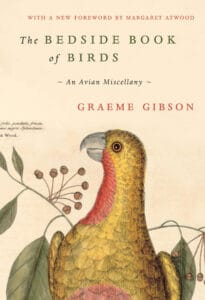
Stay up to date
Sign up to receive the latest bird conservation news. You’ll also receive updates about our projects, science and other ways to get involved including fundraising.
Thank you for your support, we are committed to protecting your personal information and privacy. For more information on how we use your data, please see our Privacy Policy. You can unsubscribe from emails at any time by using the link in the footer of any email from us.


